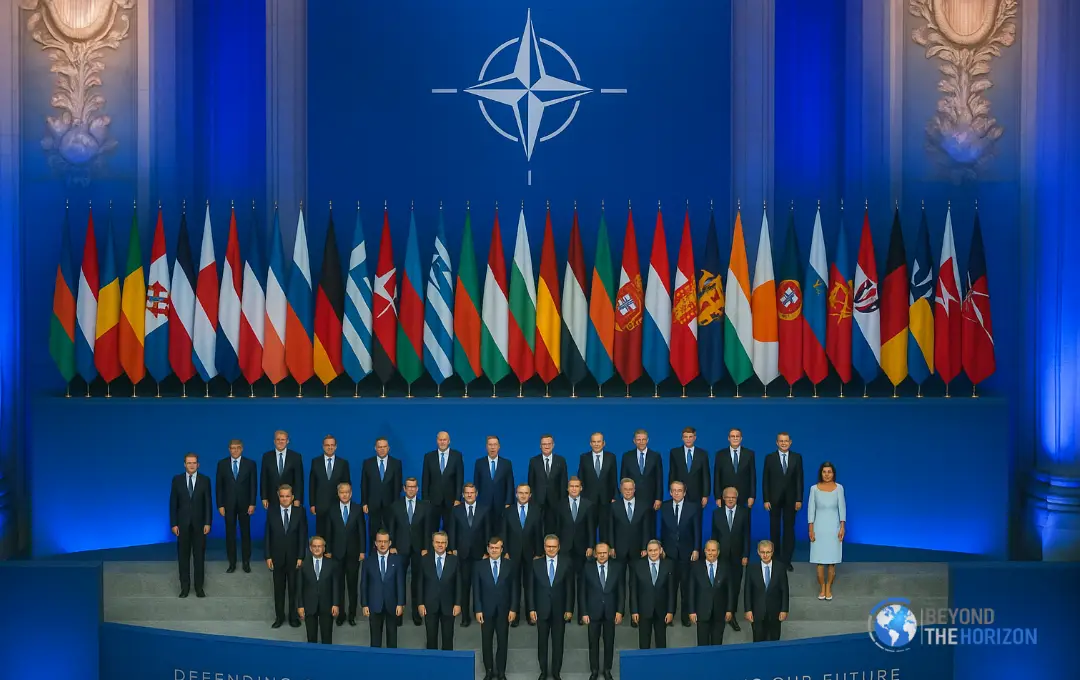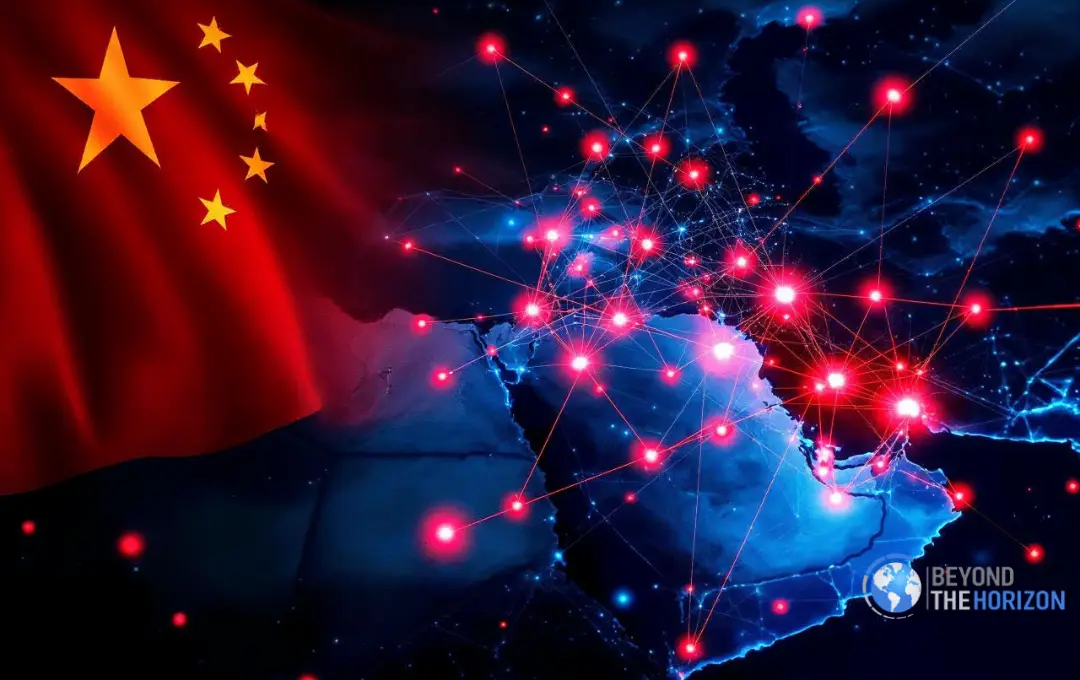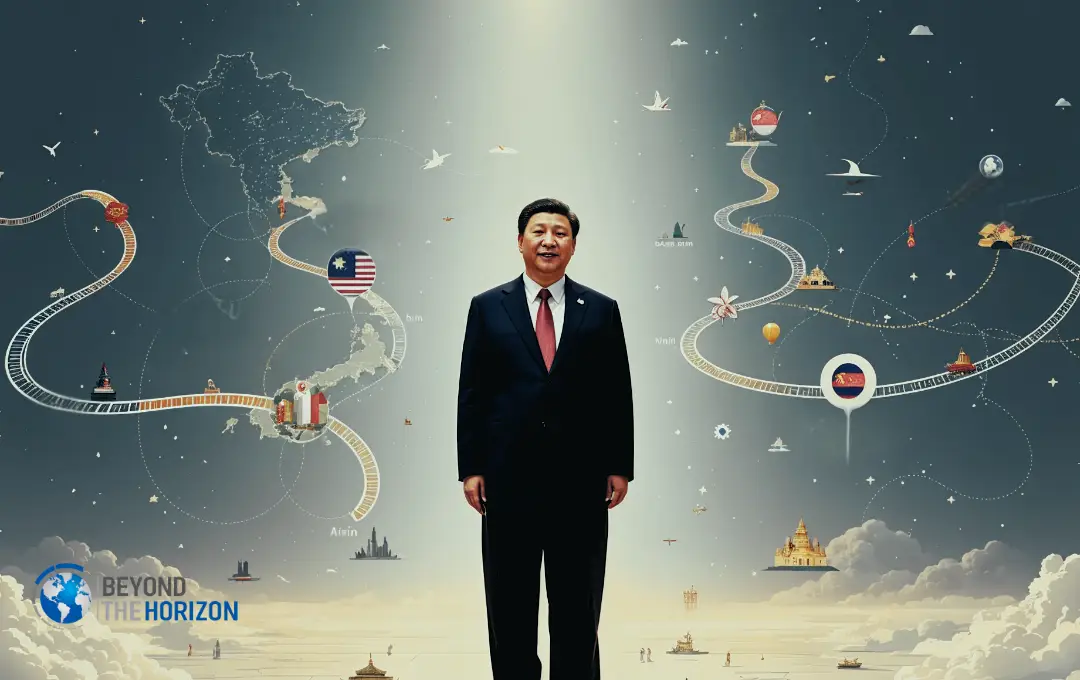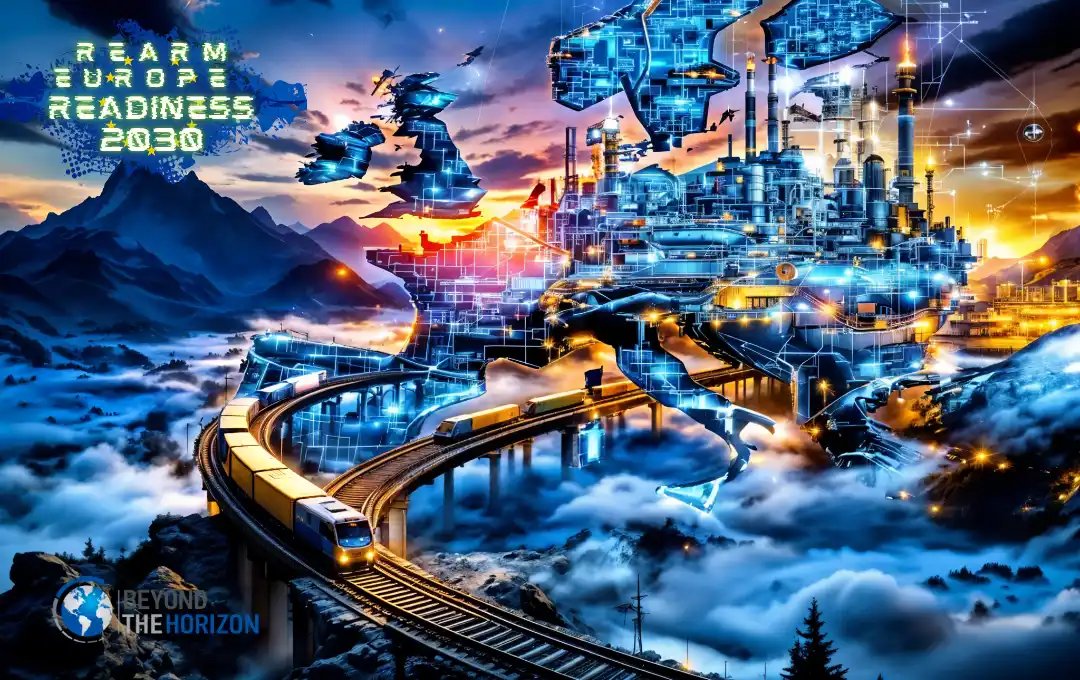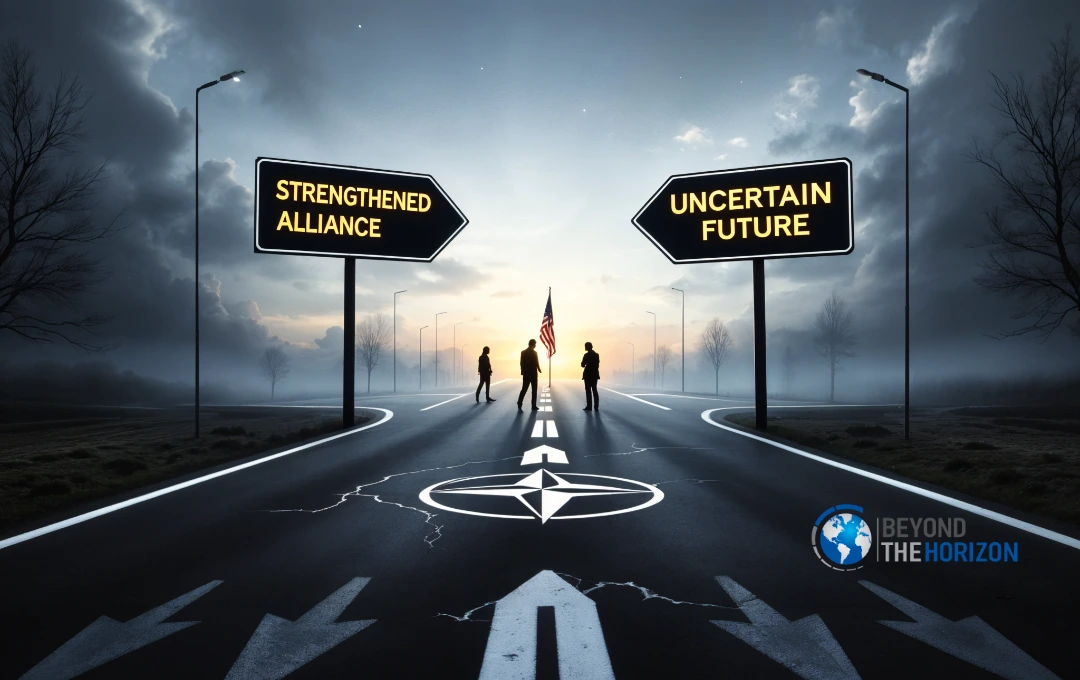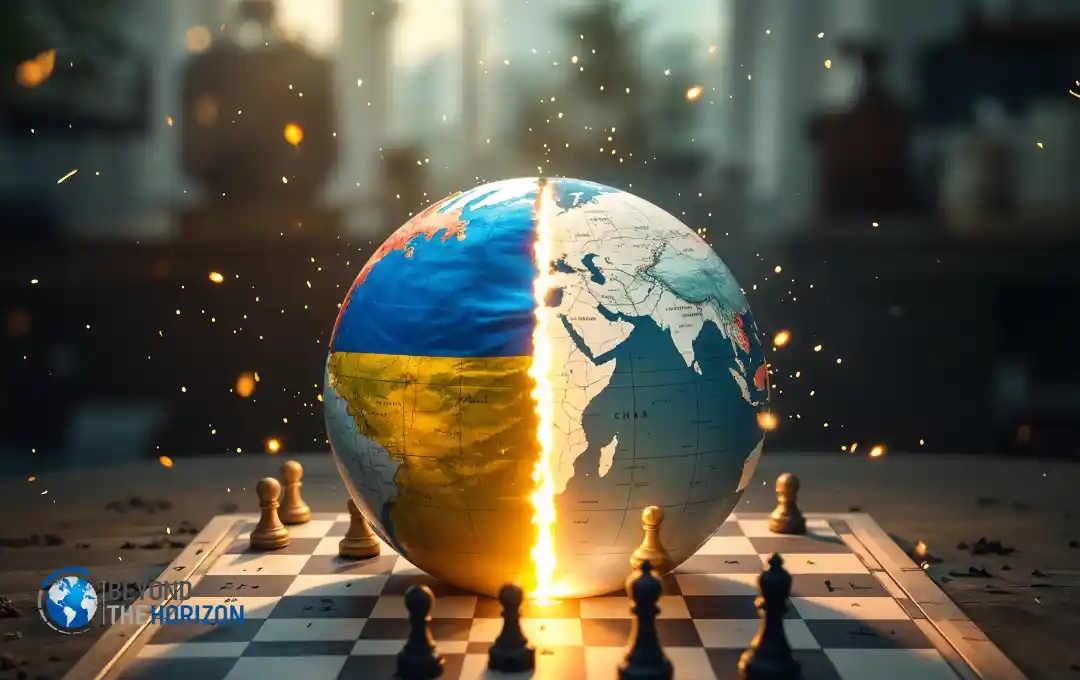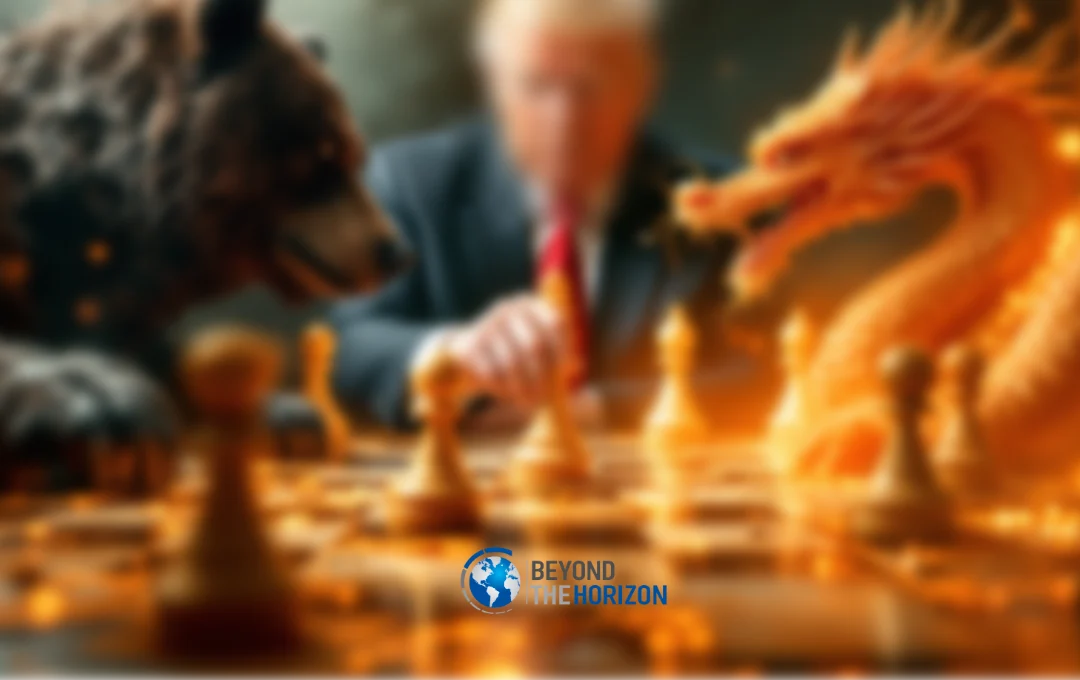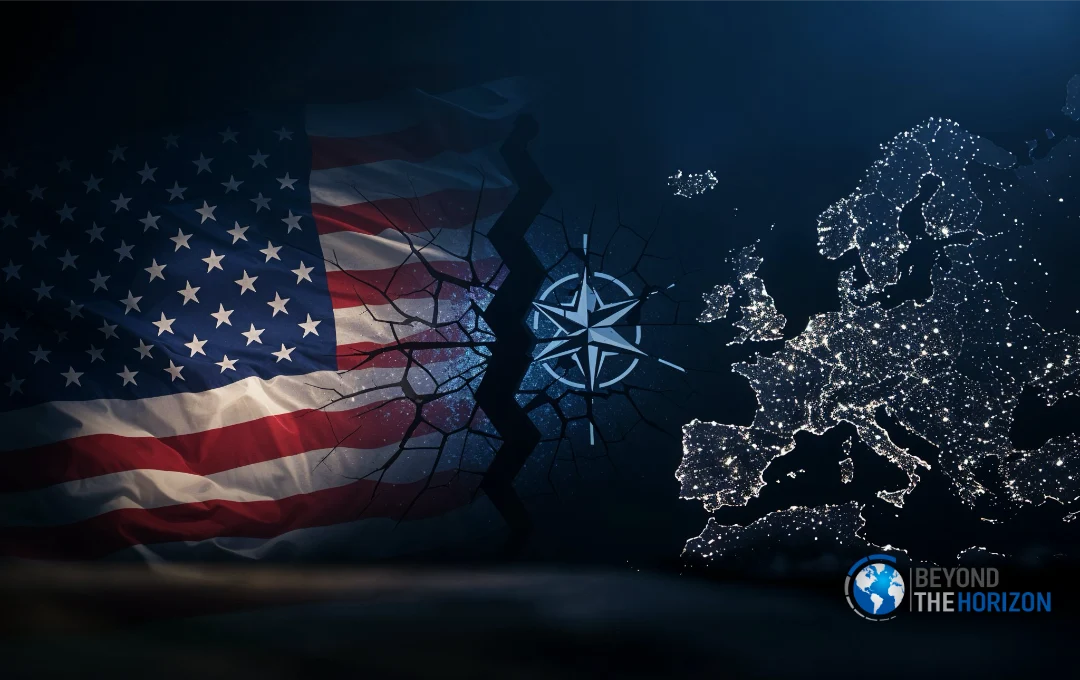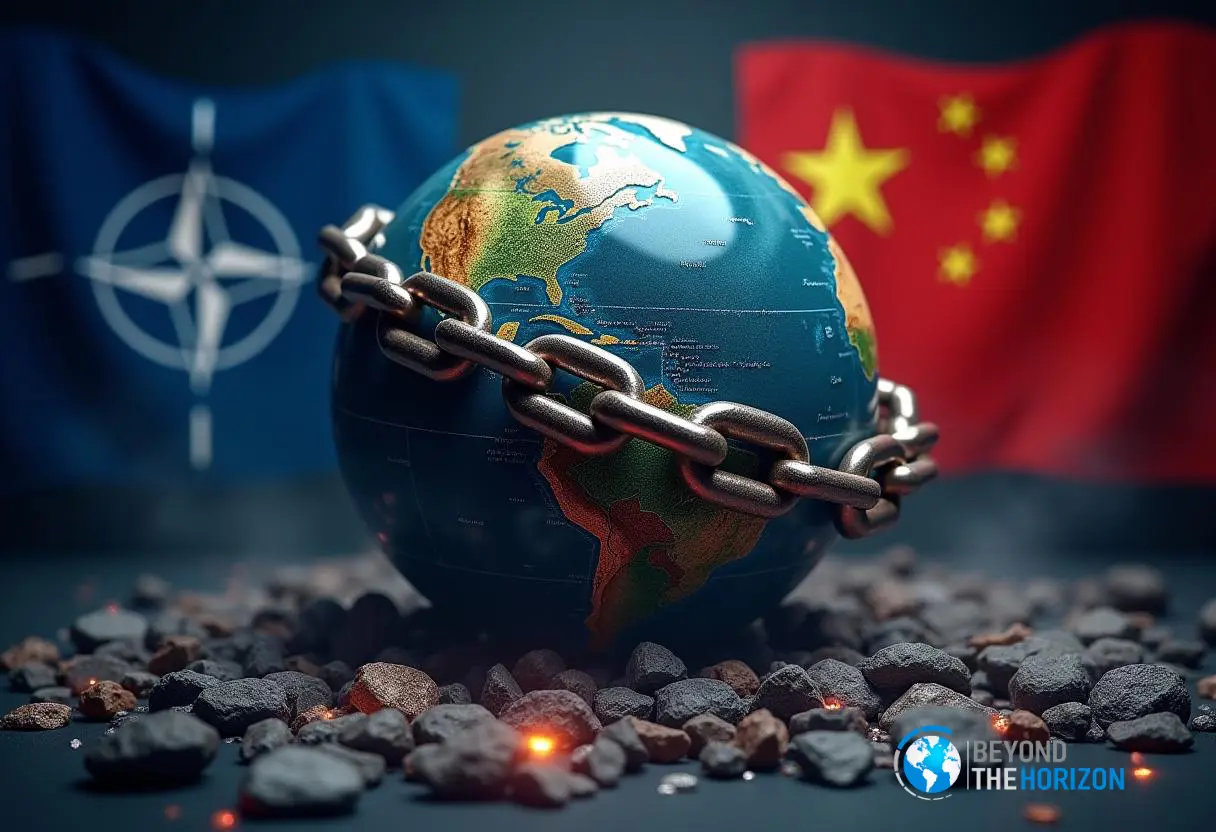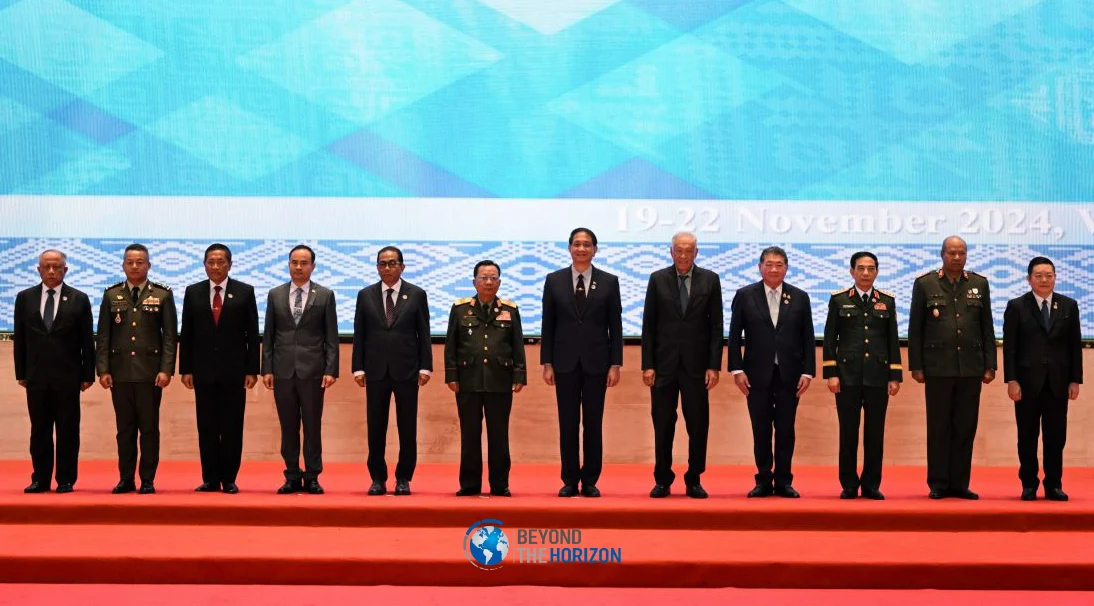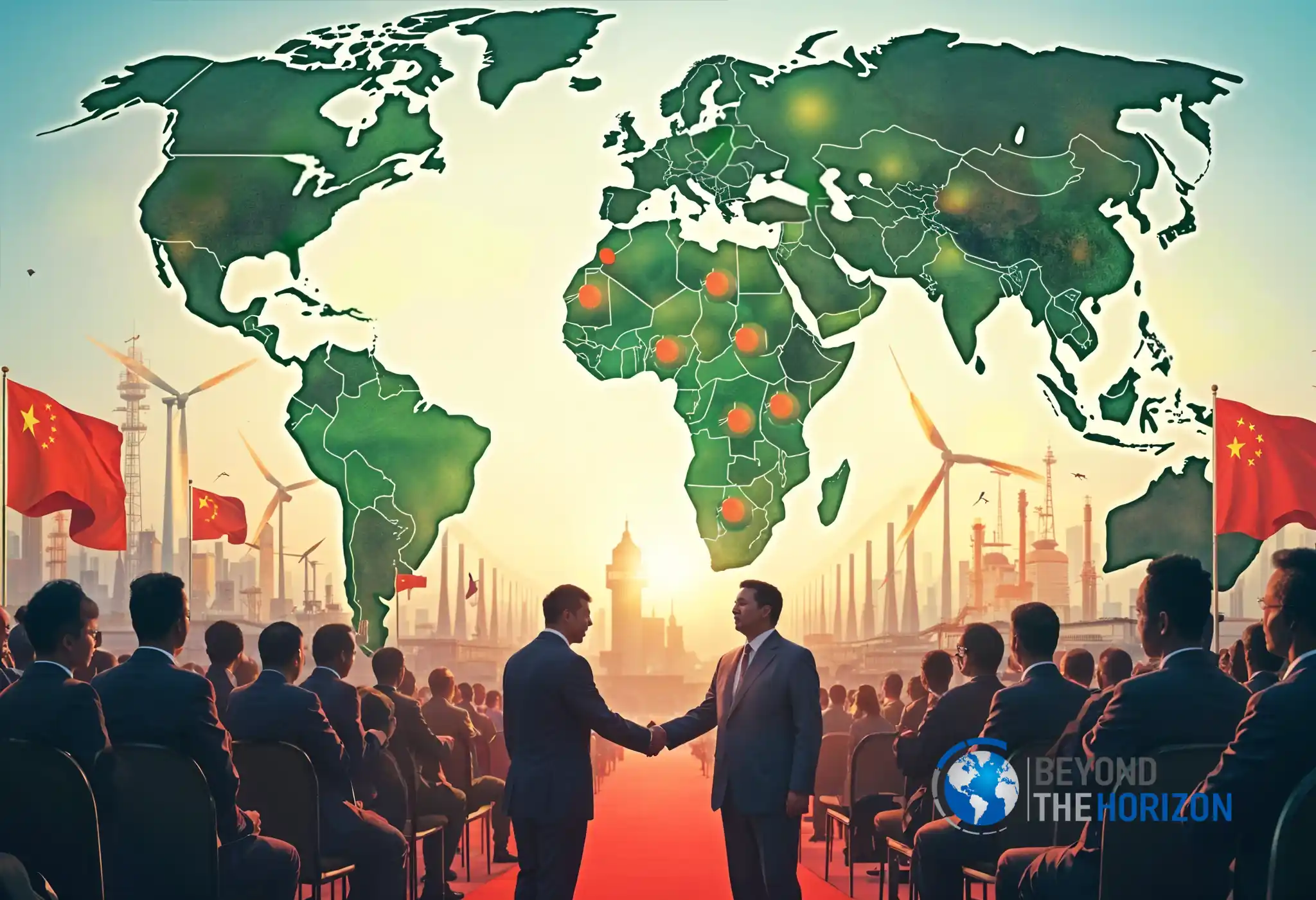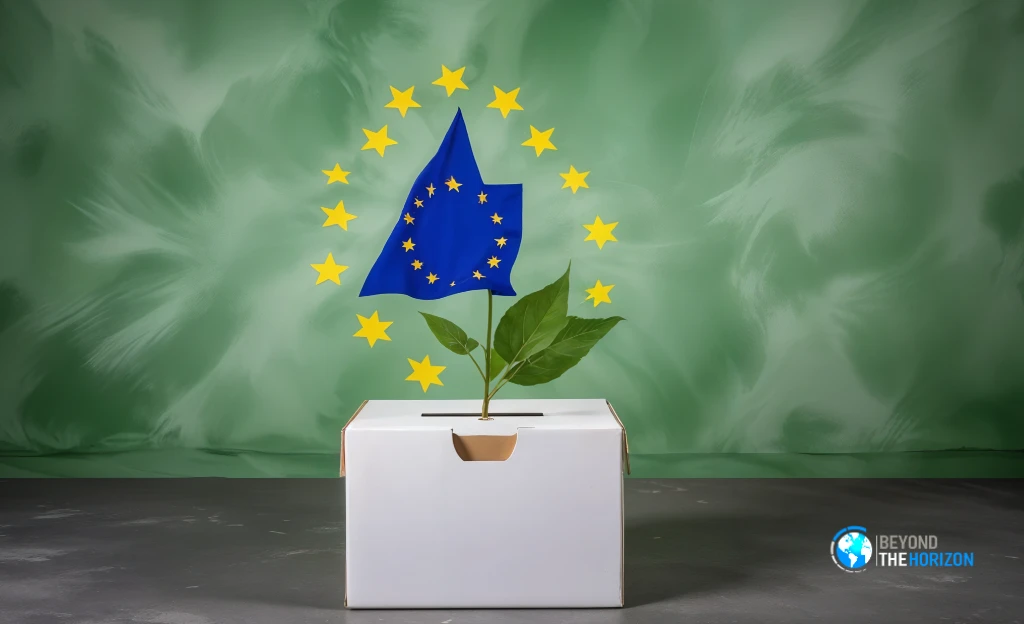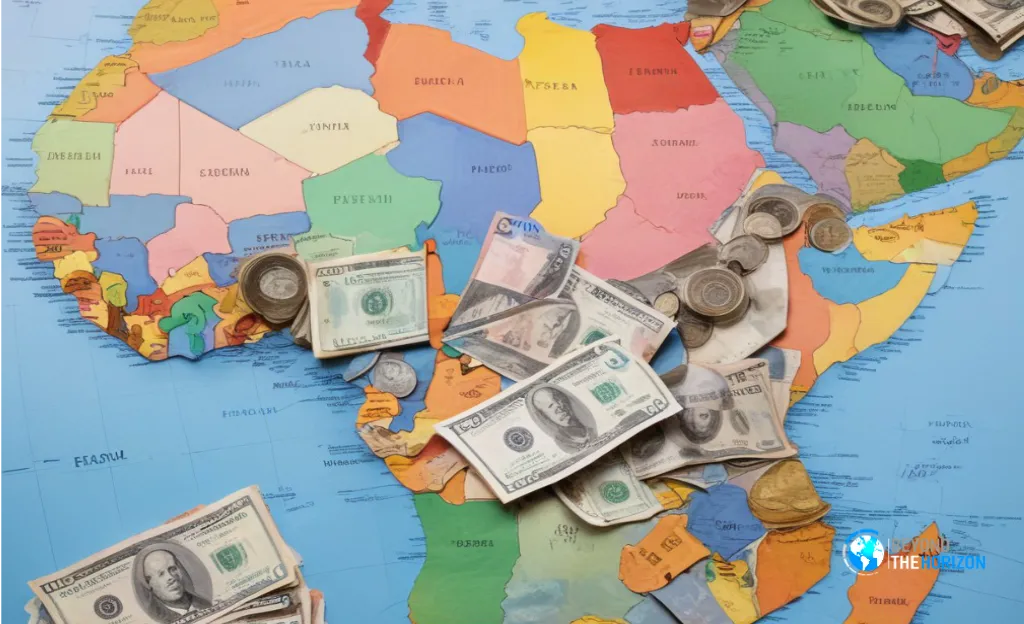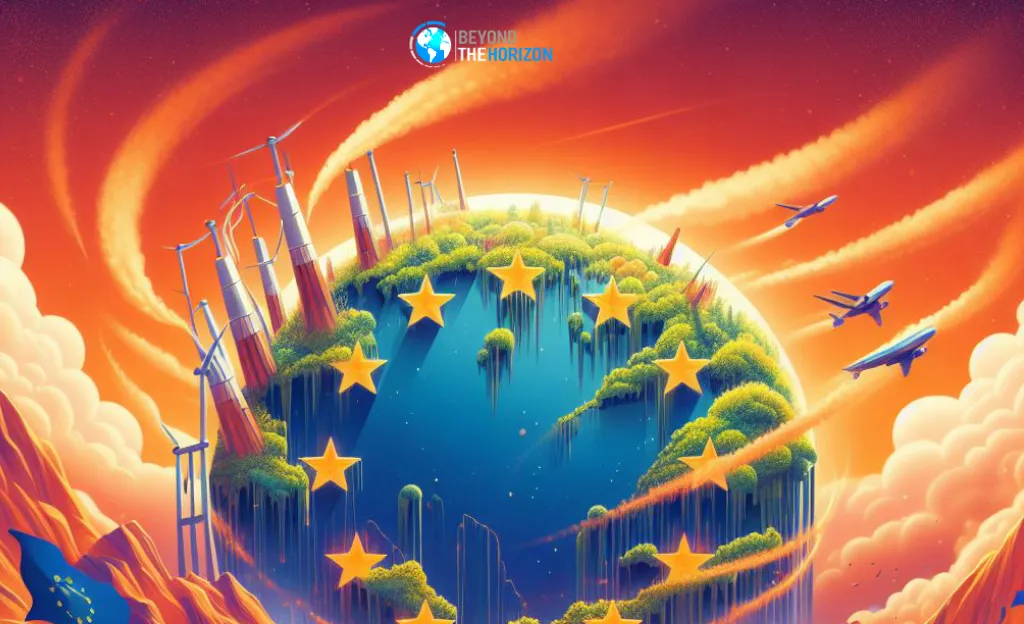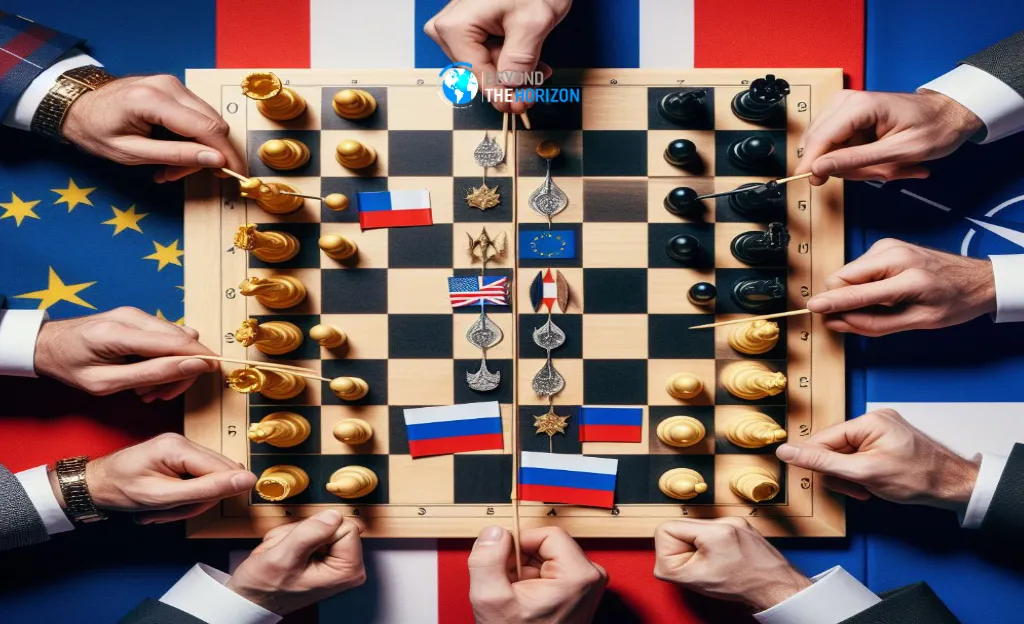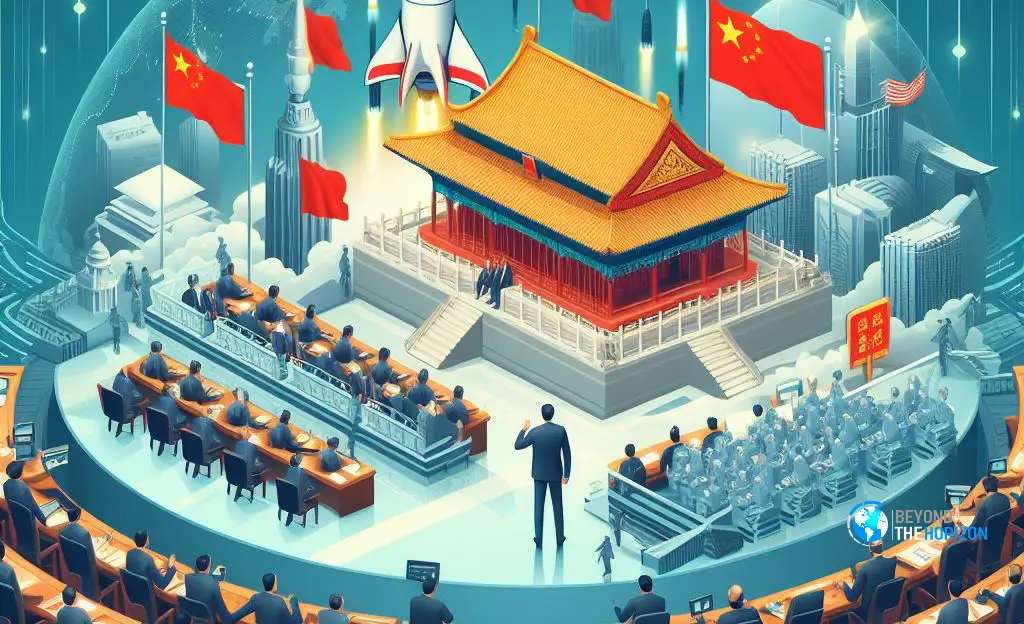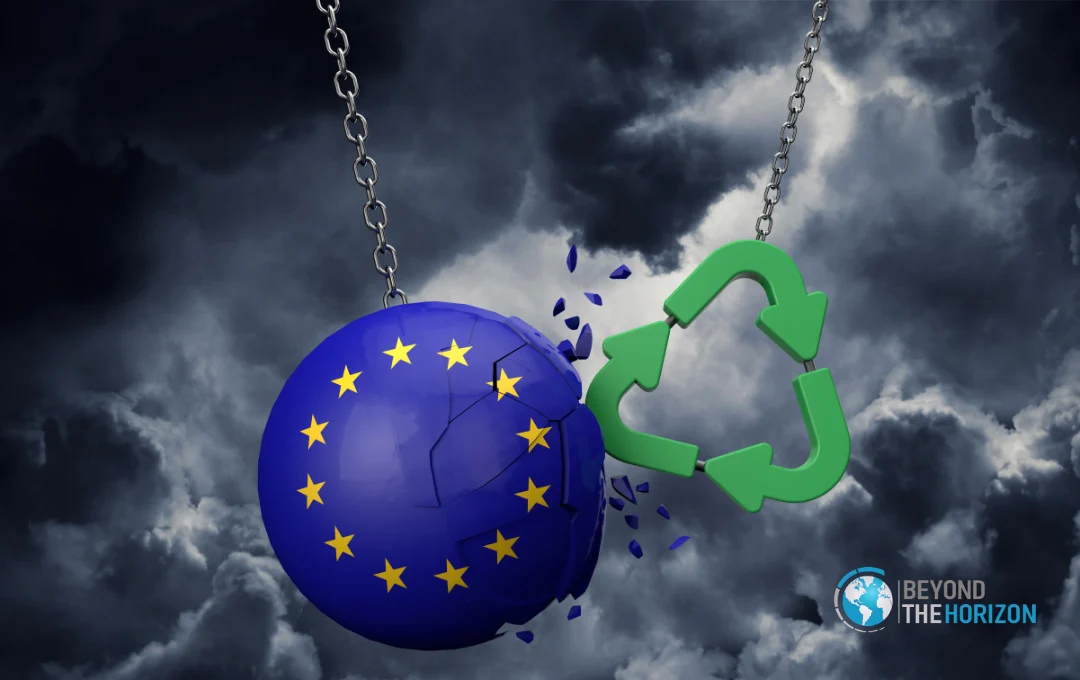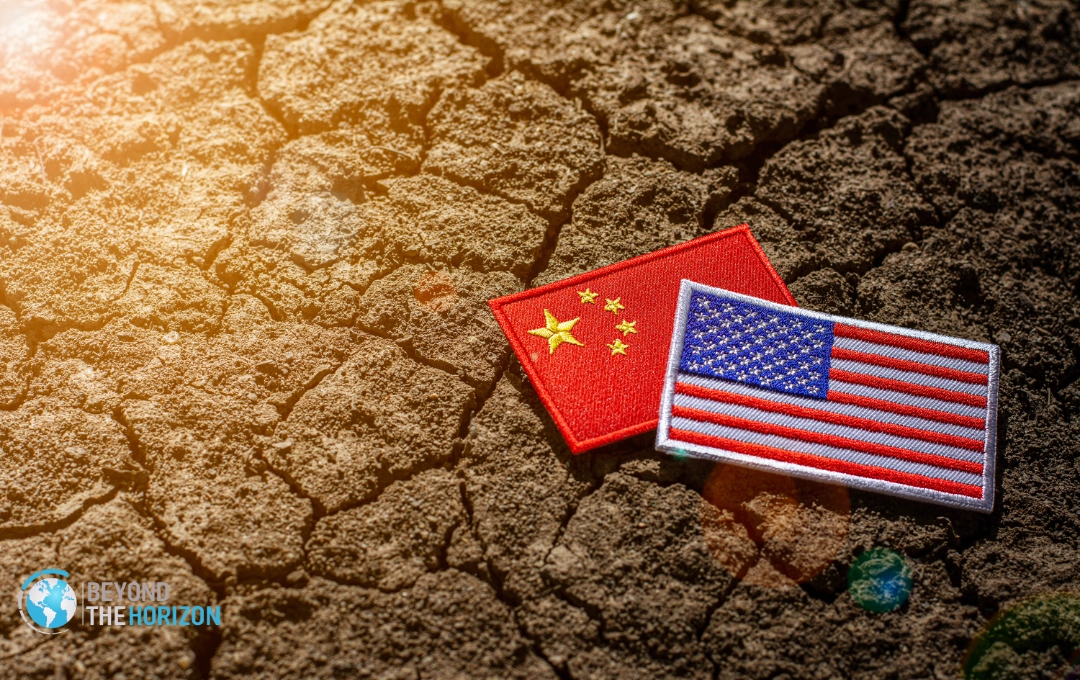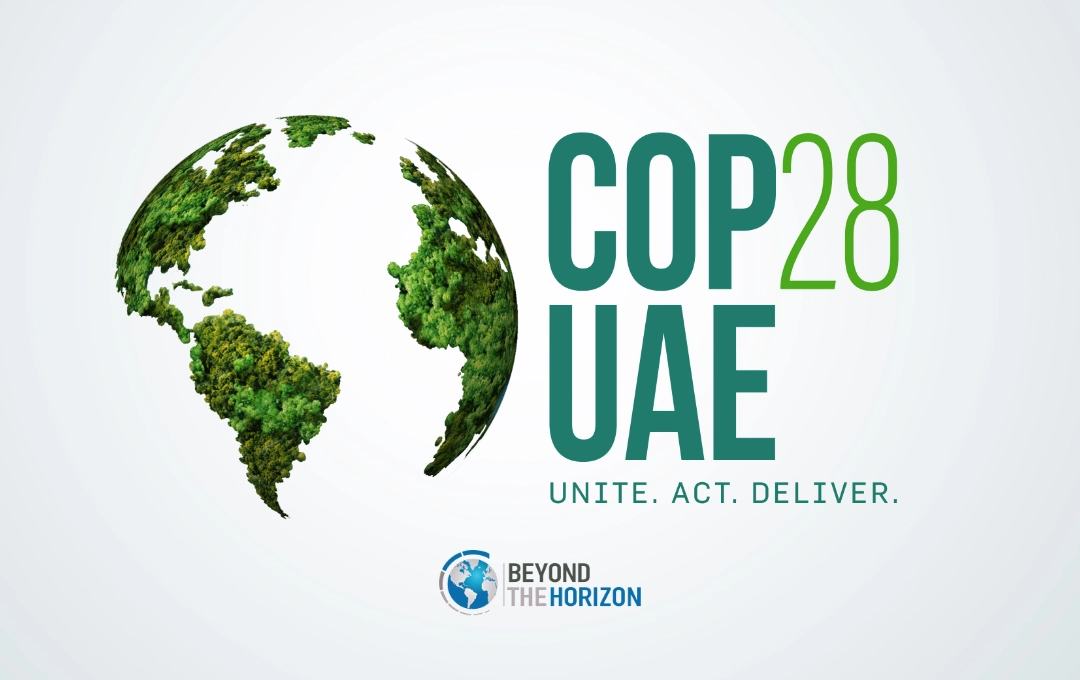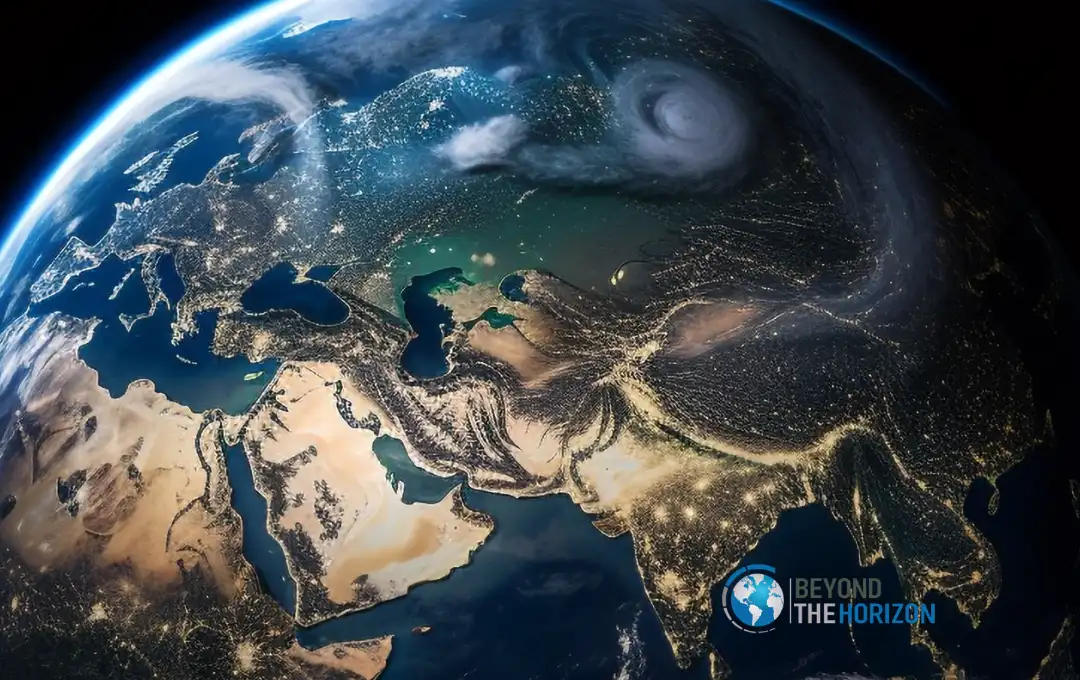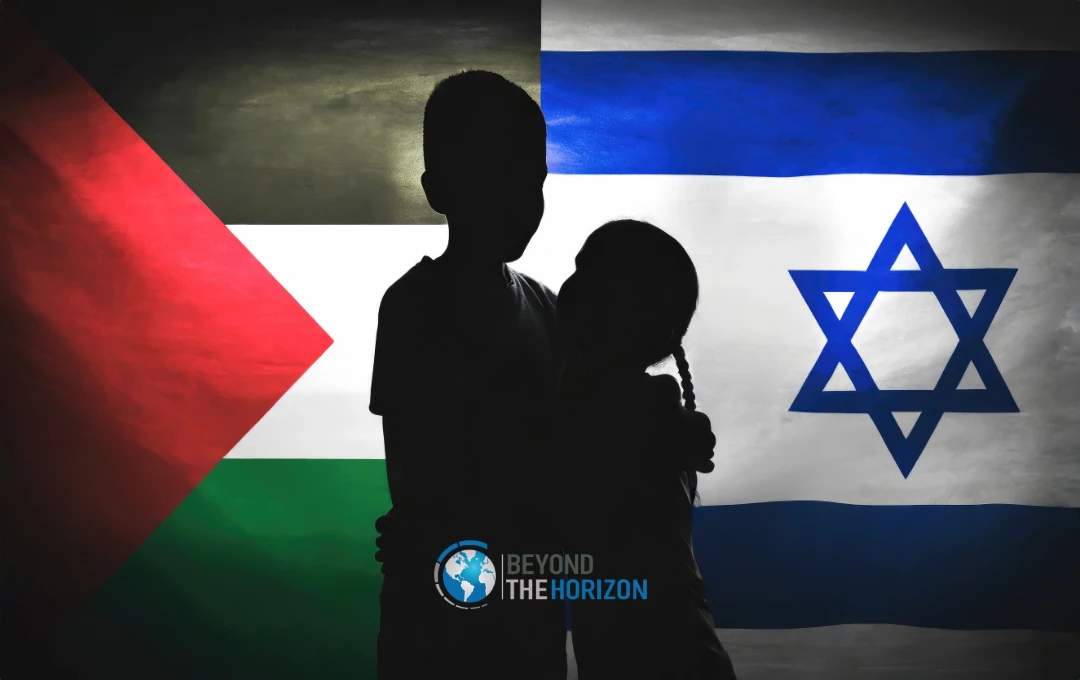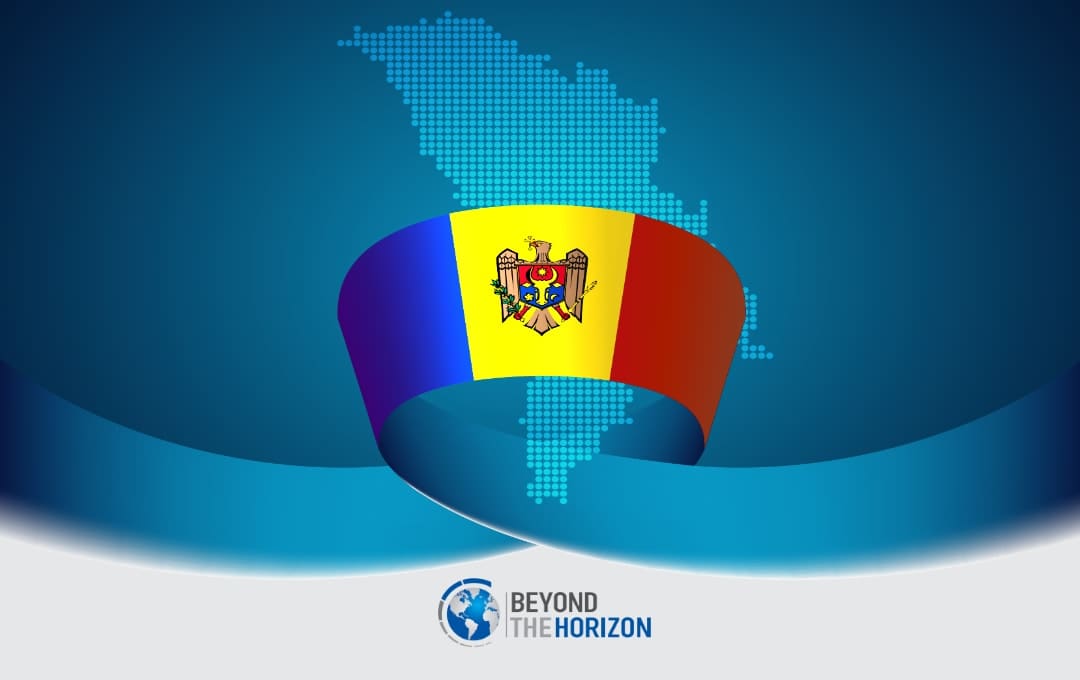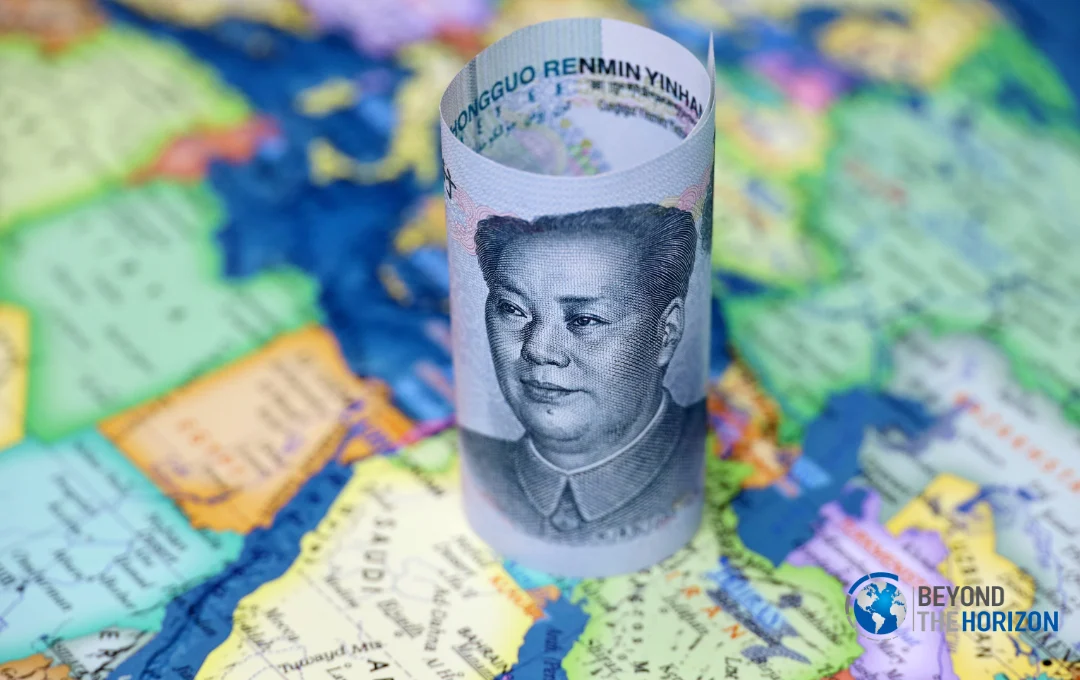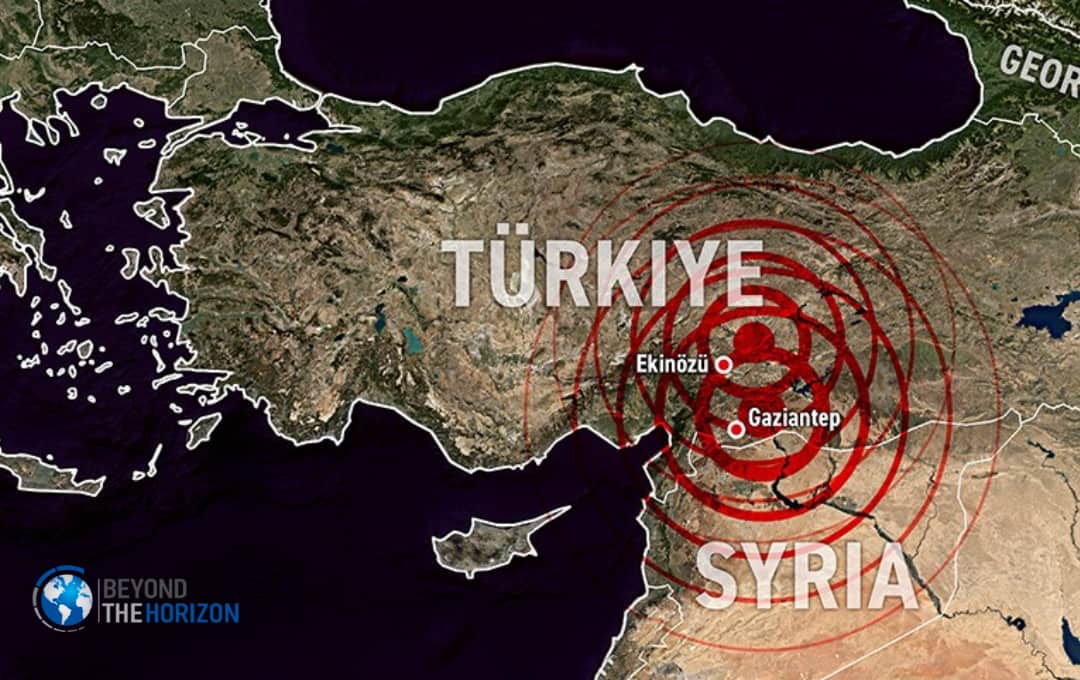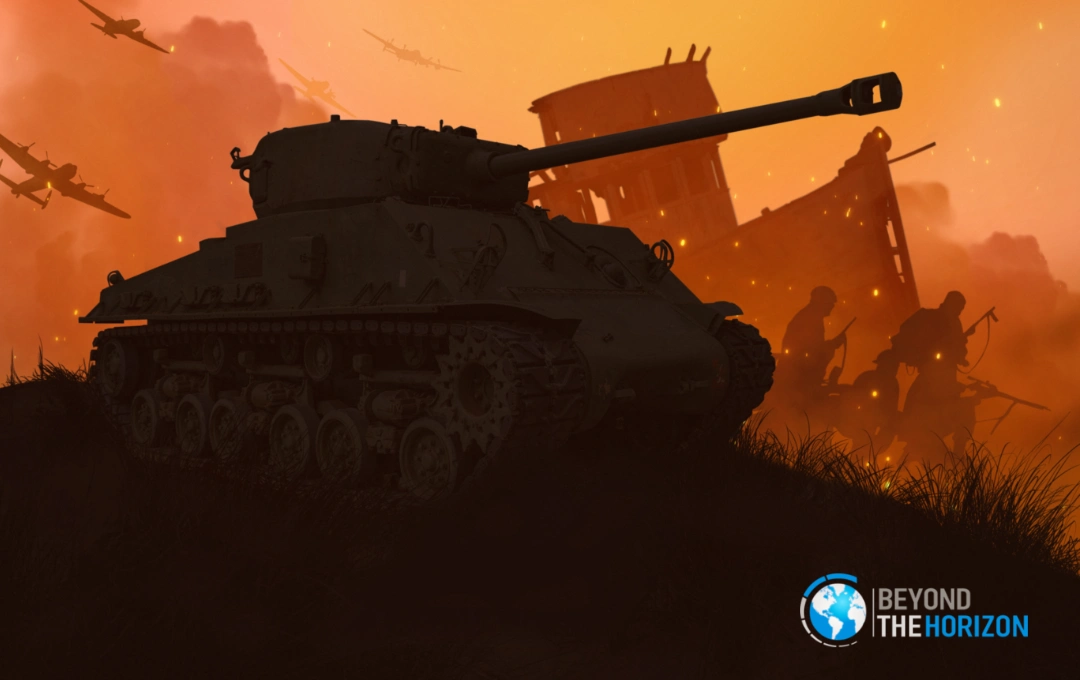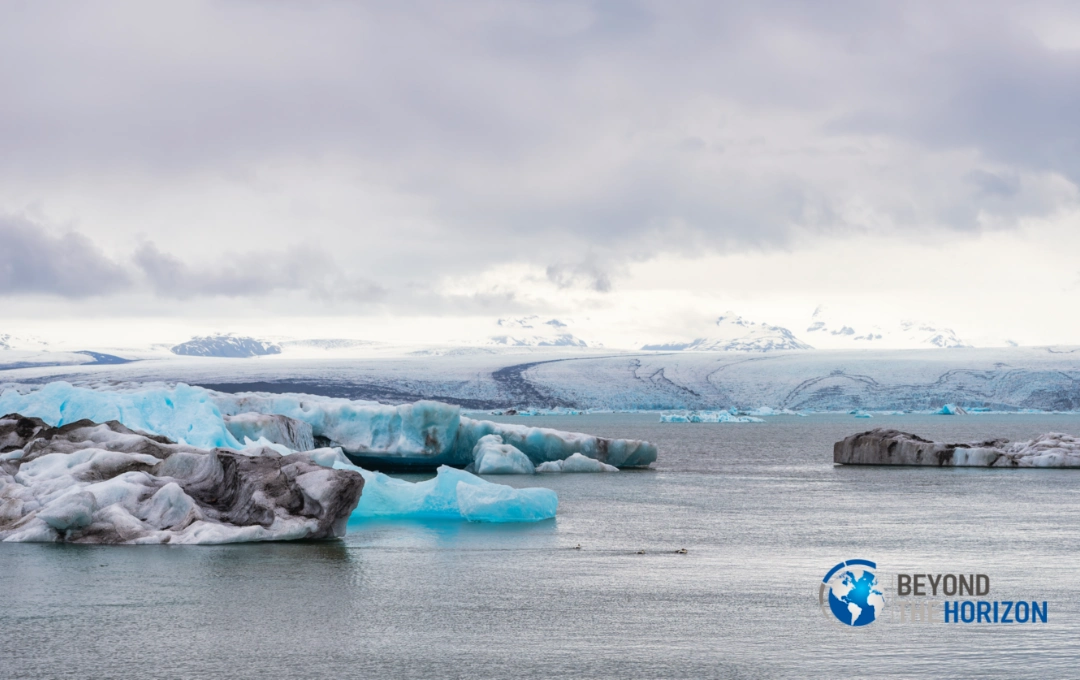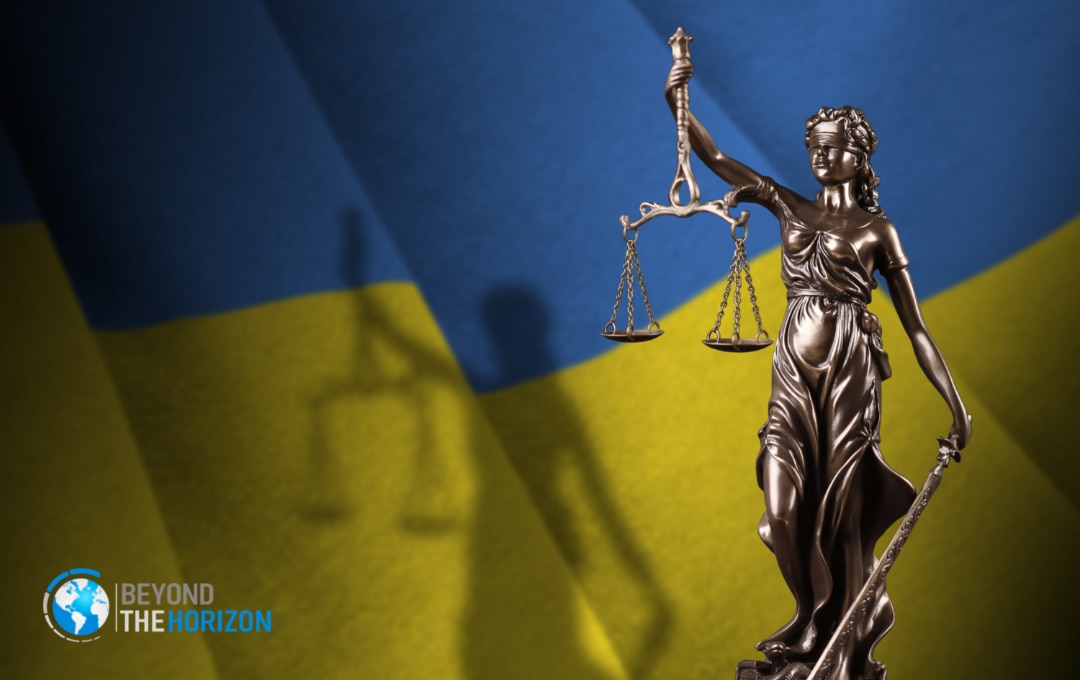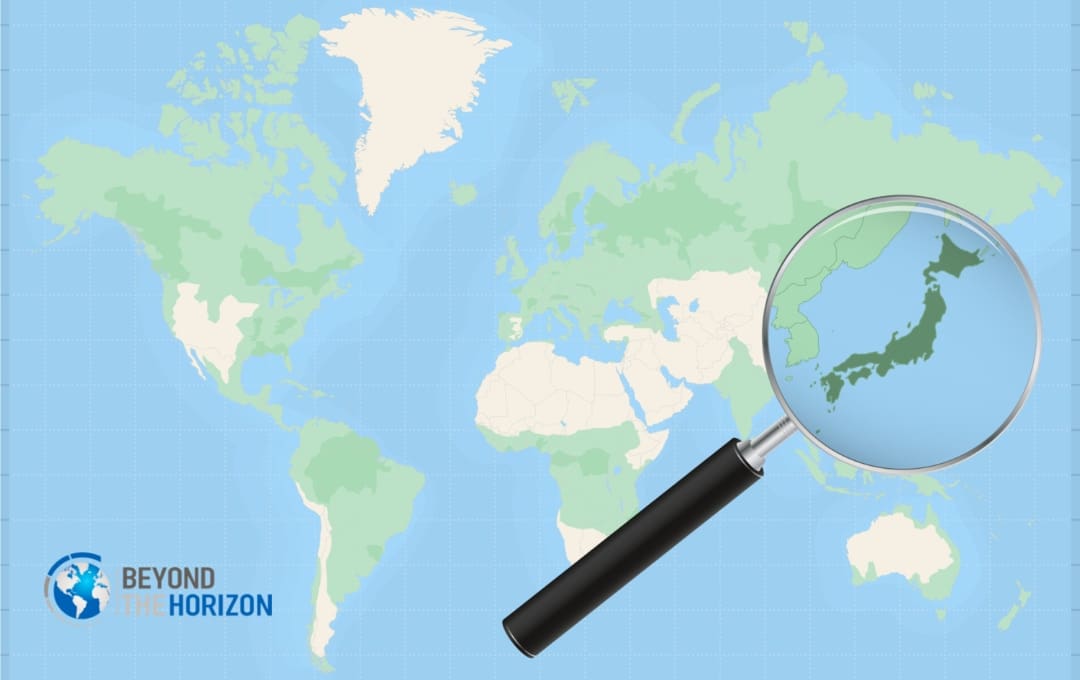UKRAINE CRISIS HORIZON (11 April – 8 May 2024)
RUSSIA-UKRAINE WAR UPDATES
11 April – 8 May 2024
Political and military situation
The drone attack on the Kremlin
As for the drone attack on the Kremlin, which Russian authorities claimed to have been conducted first by Ukraine and then the US to assassinate Putin, it normally has no logical grounds because such an attack would not be for any significant interest of the Ukrainian side. It seems to be a symbolic drone attack without a payload that can not have a real impact, or it could be a test for the Russian Air Defense in the region.
For the time being, perpetrators – whether Ukrainian side, unhappy Wagner mercenaries or Russian partisans- are unclear. But most likely, it was a false flag operation that was probably conducted to justify intense attacks on Ukraine in the following days, solidify national sentiments and suppress any moderate views.
The Kremlin drone attack was a signal before the Victory Day parade, indicating another milestone in the war was passed. It is clear that now the Kremlin has an excuse to execute more deadly courses of action targeting Ukrainian leadership, some of which might not comply with International Law.
Expected Ukrainian Counter-Offensive
The military conflict has turned out to be an attrition war and seems to be in a stalemate with a high number of casualties on both sides. Both sides have logistical drawbacks, notably a lack of ammunition, and without a war economy, it is hard for the sides to maintain the war machine. There would be no winner in this picture.
While the Kremlin aims likely to prolong the conflict, which it believes the Western democracies would not afford politically and economically, Ukraine and supporting Western countries aim to convince Putin to sit at the negotiation table as soon as possible. A successful wider Ukrainian counter-offensive would be instrumental in achieving that goal.
As Ukraine prepares for the widely expected spring counteroffensive both militarily and diplomatically, binding allies to equip the 9 mechanised infantry brigades, Russia takes all steps at various realms to secure control of Bakhmut before 9 May celebrations.
From the military perspective, given the situation in the frontline, it is unrealistic to expect a decisive theatre-wide counter-offensive from the Ukrainian side, at least this spring or summer, that will trigger a breakthrough and a change in the balance of power in favour of Ukraine unless Western Powers make their support to Ukraine more concrete and direct, which might further position NATO and the EU one step closer to a conflict with Russia.
Without maintaining strategic capabilities such as air defence and securing air superiority, it would be very difficult for Ukraine to launch a wider counter-offensive. Considering the necessary time frame for force generation, capability development and integration of all these, a general counter-offensive would not be realistic before winter. The next spring might be a more realistic time for that when the winter conditions are taken into account.
For Russia, the picture is more complex. The unfolding of the war did not bode well for Russia as it dried up reserves, and it continuously lost support both at the international and national levels. Putin has two options. The first and more logical one is to change the posture of its forces to defend the captured areas. This means less than what he aimed for. But Russian defence forces will need fewer forces while the rate of attrition for the Ukrainian forces will increase.
Pure logic dictates an immediate halt to the military campaign since nothing is left to achieve in Ukraine; cities are destroyed, and any chance of pro-Russian tendencies among Ukrainians that still survive is absolutely zero. The whole World reminds the Kremlin that we are not in the 19th century. Time is not on the Kremlin’s side; sustaining the war machine will get more and more difficult militarily, economically, and politically as the conflict prolongs.
Wagner Group
Wagner group’s leader Yevgeny Prigozhin’s threat to evacuate the city if the Ministry of Defense continued not to support the group with the required ammunition cannot be made without the information and consent of President Putin. Although redressed by Prigozhin himself, the move was probably made to deflect responsibility from Putin to lower levels.
The interesting struggle for power between Russian warlords and the Russian MoD; Prigozhin’s public accusations reveal the challenges that the Kremlin faces. Any failure on the ground will exacerbate the political picture in Moscow. And thanks to Prigozhin, ordinary Russians will accuse the Russian MoD -for the ammo that never came- instead of Putin and his inner cycle, who brought the war to their doors.
Humanitarian Situation
The international community has all to hold Putin accountable before international law. The International Criminal Court (ICC) has already issued an arrest warrant for him for the “unlawful deportation” of Ukrainian children to Russia. Now the Parliamentary Assembly of the Council of Europe (PACE) passed a resolution accounting for Russia’s forced transfer of Ukrainian children amounts to genocide. Besides, Ukraine and like-minded countries, including many EU member states, call for a Nuremberg-like International Court. Still, this seems very unlikely unless Russia would completely be defeated.
War Update 21 March - 10 April 2023
-
21 March – 10 April 2023
- The recently leaked US intel documents has once again confirmed Ukrainian will to counter attack to make new gains against Russians in the spring.
- Its forces almost surrounded in Bakhmut, Ukraine calculates to keep most elite Russian forces tied in this area, wear down those forces and prepare for the spring offensive.
- Finland’s NATO membership will have many implications on NATO’s structure and planning, and will definitely affect Russia’s defence calculations in the Baltics and in Ukraine.
- Longer the conflict persists the more likely Russia is to depend on China for resources.
Political Situation
Aside from the political disturbances created with especially S.Korea and Israel, the recently leaked US intel documents have once again confirmed the Ukrainian will counterattack to make new gains against Russians in the spring. In an effort to both take its own fate into its own hands and practically show a clear path to victory to maintain the Allies’ support in its war efforts, Ukraine’s spring will be crucial, and political calculations weigh ahead of the presidential election. Its forces almost surrounded Bakhmut, Ukraine calculates to keep most elite Russian forces tied in this area, wear down those forces and prepare for the spring offensive.
Military Situation
Just before the long-awaited Ukrainian spring offensive that will likely commence anytime soon, leaked documents unleash sensitive information on critical Ukrainian shortages, particularly in the Air Defense domain. Whether the documents are real or a deception effort, the transatlantic resolve will be decisive in this war of attrition.
Finland’s NATO membership will have many implications for NATO’s defence planning, all military infrastructure, common funding distribution, NATO Command and Force structures, advance planning efforts, and the geographical footprint of NATO exercises. It will definitely affect Russia’s defence calculations in the Baltics and in Ukraine.
Economic Situation
According to the World Bank, Ukraine’s economy is projected to grow by 0.5% this year, following a decline of 29.2% in 2022, the year of Russia’s invasion of the country. While the economic toll suffered by Ukraine as a result of the invasion is enormous, the reopening of Ukraine’s Black Sea ports and resumption of grain trade, as well as substantial donor support, are helping support economic activity this year. It is estimated that the cost of reconstruction and recovery in Ukraine has now grown to $411 billion, which is more than 2 times the size of Ukraine’s pre-war economy in 2021. As the war prolongs, this figure is likely to increase, which will also enlarge the burden on the West for its financial support efforts. IMF’s recent approval for the budget arrangement amounting to $15.6 billion over the four years through 2027 is a part of this effort.
On the other hand, Russia’s war efforts are increasingly impacting its economy a year after the invasion of Ukraine. The longer the conflict persists, the more likely Russia is to depend on China for resources.
Humanitarian and Environmental Situation
The Ukraine War is not fought along the frontiers, but it spreads to all walks of life, from the parliaments of other nations to the Olympics and from kids’ drawings to religious sites. The widespread battle heralds long-term hatred and atrocity between the people of Ukraine and Russia. There is little possibility of détente or reconciliation, if any.
As an impact of the Ukraine War, the renewable electricity capacity in the EU is projected to double over the next five years due to energy security concerns and climate ambitions. Many European countries passed or proposed action plans with even more ambitious targets, increased policy support for renewables, and addressed related non-financial challenges.
War Update 01 - 20 March 2023
-
01 – 20 March 2023
- On the eve of the expected spring offensive of the Russian Army, the situation escalated to the degree that the war in Ukraine cannot be interpreted as a local one.
- Ukraine’s defence is holding, with outstanding sacrifices, no breakthroughs in any front for Russia is foreseen.
- From the outset, the Russian Army lacks impetus, no matter how much terrain it holds in Ukraine.
- Ukraine continues its drone strikes against Russia’s bases and critical infrastructures, which indicates Ukraine’s increasing military reach far from the war zones
- The International Criminal Court issued an arrest warrant for Putin because of his responsibility in the forced transfer of Ukrainian children.
Political Situation
The recent New York Times report depending on intel reports, hints at Ukrainian involvement in the sabotage of the Nord Stream pipelines last year. Initial assessments estimating a downturn in relations between Germany and Ukraine in case this involvement is proved does not seem to have substance. The recent declaration of readiness from Poland to supply Ukraine with Mig-29s and the European Defense Ministerial to decide on a three-track plan to address existing shortfalls to support Ukrainian artillery indicates otherwise. The intel report is still in preparation. Yet, whatever the result shows, it is unlikely that the Allies change their mood in terms of supporting Ukrainian war efforts.
Military Situation
On the eve of the expected spring offensive of the Russian Army, the situation escalated to the degree that the war in Ukraine cannot be interpreted as a local one. Interventions from South Korea to Slovakia, the tremendous amounts of military aid that Ukraine receives, direct and indirect effects of the war on the global markets indicate that we are one click short of an all-out war on a global scale. Ukraine’s defence is holding, with outstanding sacrifices, and no breakthroughs on any front for Russia are foreseen. From the outset, the Russian Army lacks impetus, no matter how much terrain it holds in Ukraine. The Russian Army used state-of-the-art weapon systems like Kinzhals probably not only to further tactical objectives but also to give a message to the West, something short of a nuclear weapon.
Ukraine continues its drone strikes against Russia’s bases and critical infrastructures. Although the latest attacks in Belgorod, Tuapse, Bryansk, and Adygea did not inflict significant damage, they indicate Ukraine’s increasing military reach far from the war zones. Ukrainians also seem to find new means for targeting after SpaceX denied them the use of Starlink’s capabilities for offensive purposes.
One of the main tenets of Russia’s maritime strategy and leverage in the Black Sea is to choke Ukraine’s maritime trade and transportation, notably by hindering the grain corridor and maintaining its own merchant activities. Despite the latest calls, Russia has yet to respond to these demands. On the flip side, Putin compensates for the shrinkage of oil exports from the EU’s sanctions by doing business with non-EU countries. Though its success is disputed, this can be regarded as part of the overarching Russian strategy to direct trade to the Eastern countries.
Humanitarian Situation
Even though the majority of Ukrainians, who seek refuge in European states, are willing to go back home, lingering war makes it puzzling. It’s been a year already, and many kids continue their education in the host country’s local schools. The longer the war extends, the more Ukrainians will stay where they are. This will have negative consequences, especially for Ukraine, which would need more manpower in the post-war phase.
As the war prolongs, more evidence is found on mistreatment and torture, which heralds continuing hostilities between the peoples of Ukraine and Russia, feeds also future conflicts. Besides, the Western World unites in holding Russia accountable.
Recently, an Human Rights Watch Report reveals thousands of Ukrainian kids are forcibly deported to Russia, which amounts to a war crime, later to be adopted by Russian families. As a result, the International Criminal Court (ICC) issued an arrest warrant for Putin because of his responsibility for the forced transfer of Ukrainian children.
War Update 31 January-13 February 2023
-
31 January – 13 February 2023
- Russia has made a strategic shift in using drones which has significant implications for the current war.
- SpaceX denied Ukraine from using Starlink’s capabilities for offensive purposes this week, which will hinder Ukraine’s ability to attack Russia.
- The hatred causes step-up “de-russification” from all walks of life in Ukraine, including culture.
Military Situation
The recent drone strike by Russia indicates a strategic shift in Russian naval thinking and has significant implications for the current war. This is the first time Russia has conducted an attack using a maritime drone instead of conventional assets such as warships.
The Russian Navy had to pull some assets back to Novorossiysk in December 2022 following Ukraine’s drone attacks. After this dramatic retreat, the Russian Navy pursued a defensive posture by only launching Kalibr missiles and solidifying its defences against drone strikes. This has changed. Yet it is hard to tell whether this attack can be part of an anticipated broader offensive.
Moreover, SpaceX denied Ukraine from using Starlink’s capabilities for offensive purposes this week, citing the use of Starlink in the drone strikes. This situation will hinder Ukraine’s ability to attack Russia. That is why Zelenskiy spoke out against the company’s decision.
The use of drones by Russia poses two disadvantages for Ukraine. First, Russia can target merchant vessels to hinder maritime trade, one of the main tenets of Putin’s strategy. Second, maritime drones will allow Putin to attack high-value targets without putting the warships at risk. The West needs to supply systems to protect critical targets and bases against drone strikes.
Humanitarian Situation
The Russian Invasion of Ukraine is causing catastrophic consequences: 100,000 Ukrainian and 180,000 Russian soldiers are killed or wounded; some 30,000 to 40,000 civilians (Ukrainians) are estimated to lose their lives; many war crimes were recorded which would create rifts between the peoples of Russia and Ukraine apart for the years to come; more than 8 million Ukrainians had to flee their country, the largest refugee crisis after WWII; Ukraine’s economy is expected to retract %35 in 2022, and a fund of $138 billion is needed to replace the war torn infrastructure.
The hatred causes to step up “de-russification” from all walks of life, including culture. Millions of Russian books are withdrawn from Ukrainian libraries. Apart from cultural alienation, this seeds further fault lines between the Ukrainian and Russian-speaking Ukrainian citizens.
War Update 17-30 January 2023)
-
17 – 30 January 2023
- Upon US, UK and German announcement to send tanks to Ukrainian forces, the total tank pledges to Ukraine amounted to 321. New countries may follow to support.
- Russia works on a mobilisation scheme to maintain flow of manpower to feed the combat.
- Despite Russian propaganda that the war would recommence in full force in February with arrival of new recruits, their combat readiness will likely not be at expected level and the efficiency of its logistical performance is already disappointing.
- As the war prolongs, not only the buildings and civilian infrastructure is damaged, but also the international cultural heritages.
Political Situation
This week, among questioning whether Western support for the war in Ukraine would continue, NATO Allies and Partners took decisions that had the potential to paralyse Russian authorities and armed forces and limit their freedom of movement. Upon US, UK and German announcement to send tanks to Ukrainian forces, the total tank pledges to Ukraine amounted to 321. There are also several countries like Spain and Netherlands that consider the issue and will probably join the bandwagon.
The Russian reaction was to threaten not to renew the New START Treaty which is due to expire on 26 February 2026. There are also talks at various levels to provide Ukrainian forces with long range missile systems and F16 fighter jets.
The Russian government, although not officially promulgated, is currently working on a mobilisation scheme to maintain flow of manpower to feed the combat. Despite Russian propaganda that the war would recommence in full force in February with arrival of new recruits, their combat readiness will not be at expected level and the efficiency of its logistical performance is already disappointing. In case Ukraine manages to get long range missile systems and F16, a new stage in the war will be attained that can open door more support from its Allies to Russia.
Every player wants to be on the winning team. After the momentum was attained in the support to Ukrainian forces, NATO SecGen started his far east tour, starting with South Korea. With more combat progress is made and more countries make their support intention known, so far apathetic states can be expected to announce support.
Military Situation
The conflict in Ukraine is rapidly becoming international. Constant failure of the Russian Army on the ground encourages Western countries to support Ukraine with more meaningful and lethal weapons. If Ukraine manages to successfully integrate the equipment provided by Western powers into its battle hardened armed forces, a counter-offensive in the spring might turn the tide against Russian occupation forces.
Despite the Ukrainian drone attacks against Russia’s Black Sea Fleet, the Russian Navy still poses threats to Ukraine by launching Kalibr missiles, imposing a blockade on Ukraine, and threatening merchant vessels. Though Kalibr missiles enable Russia to strike Ukraine from far distances, Putin’s primary strategy and leverage in the Black Sea is to choke maritime and transportation, notably by hindering the grain corridor. Therefore, the focus should be on protecting the maritime trade and routes rather than worrying about the Kalibr missiles left in Russia’s arsenals.
After Germany’s decision to supply tanks, Ukraine’s deputy foreign minister asked Germany to provide submarines and frigates to Ukraine. Since these warships require immense teamwork, technical capacity and logistics, it could be hard to operate them within a short period for Ukraine. It is more likely in the Navy domain that the focus will be on delivering more anti-ship missiles and coastal surveillance systems to Ukraine.
Humanitarian Situation
As the war prolongs, not only the buildings and civilian infrastructure is damaged, but also the international cultural heritages, such as Odesa, which we have to save for future generations. Otherwise humanity will become more and more poor culturally. Extending war and atrocities seed hostilities among people, individual human beings, affecting even sportsmen and sportswomen.
International community searches for avenues to hold Russian leadership accountable for starting a war, yet, there seems to be no quick solution in this international setting founded by the Second World War. Once over, a more just international setting is needed where no single country can veto a decision backed by the big majority of the remaining decision makers.
War Update 03-16 January 2023)
-
03 – 16 January 2023
- The Russian side makes preparations for an increased tempo that will feature 150.000 new Russian recruits and a new leadership.
- The UK pledge of a squadron of Challenger II tanks opens a new chapter of Western support to Ukraine.
- Despite a relative halt, the war in Ukraine will likely restart in a harsh manner soon in the spring.
- Russia’s new wave of attacks target Ukraine’s energy infrastructure, further increasing the civilian suffering.
Political Situation
Despite a relative halt, the war in Ukraine will likely restart in a harsh manner soon. The Russian side makes preparations for an increased tempo that will feature 150.000 new Russian recruits that will finish training in February and a new leadership. The Ukrainian side’s response will depend on the continuity of Western support. The UK made an opening this week by pledging to send a squadron of Challenger II tanks that has already found echo in Germany through Leopard II tanks. The Ukrainian side also expects more support from Allies to include more heavy weapons alongside support to make living for the 6,5 million internally displaced Ukrainians possible in these harsh winter conditions. So far, there is no leak in the Western support dam. The intensification on both sides hints that the war will be extended.
Military Situation
Developments in the military domain indicates that a Ukrainian counter-offensive is in the making. To this end both Ukraine and its Allies are gathering necessary resources. A counter offensive can be expected before spring. A possible use of tactical nuclear weapons by the Russian Army is highly unlikely at the moment.
The Russian Navy had already pulled some assets back to Novorossiysk after Ukraine’s remarkable attacks against the Russian warships by employing aerial and maritime drones. The Russian Navy did not feel safe in their naval bases. However, this does not mean that Russia’s Black Sea Fleet will maintain an entirely defensive posture. The Russian Navy will likely continue to strike Ukraine.
After the surge in the naval activity of the Black Sea Fleet, the UK Defence Intelligence stated that “It is unlikely that the deployment signifies preparation for unusual maritime-launched cruise-missile strikes.” Many believe these movements took place due to the fear of a new Ukrainian attack against Russian warships. Even though the dust has yet to settle, and the fear of a new attack against Russian warships could play a role, the Ukrainian officials stated that Russia employed seaborne Kalibr missiles along with other airborne missiles and would continue to use Kalibr missiles. Consequently, it is a grave mistake to underestimate the Russian Black Sea Fleet. Ukraine needs to boost its arsenals with more missile defence systems and additional anti-ship missiles.
Humanitarian Situation
Russia’s new wave of attacks target Ukraine’s energy infrastructure, further increasing the civilian suffering. A nine-storey building in Dnipro was hit by a Russian missile, killing more than 20 civilians and injuring over 60. As the war prolongs, the discussions focus more on providing more weapons to Ukraine and less on the humanitarian side.
Even though the European Union accelerated finding alternative solutions for the energy crisis, it is not so easy to get rid of Russian Natural Gas dependency in the short term. Thanks to warm weather conditions the worst case has not occurred but European Leaders should find a sustainable solution until the next winter at worst. The Russia-Ukraine war will highly likely continue during 2023 and the energy crisis will likely continue.
War Update 01 December 2022 - 02 January 2023)
-
01 December 2022 – 02 January 2023
- Russia continues regularly to conduct long-range strikes targeting civilian locations, primarily the Ukrainian power distribution network, and takes a similar approach against Ukrainian air defence.
- The Ukrainian President secured the US supply of Patriot missiles as well as a generous defence package during his visit to Washington.
- The prospects for Russian military success in the unfolding war decreases as the high tolerance for losses fades.
Military Situation
Russia has been conducting since October a general pattern of an intensive wave of long-range strikes every 7-10 days primarily targeting the Ukrainian power distribution network. Russia is taking a similar approach in an attempt to overwhelm Ukrainian air defences as well. However, Russia might not be sustaining considering the depleting stocks of ammunition.
After Ukraine’s remarkable strikes against Sevastopol, where the Black Sea Fleet and its headquarters are located, Russia reportedly pulled its submarines to Novorossiysk, a safer harbour where Russian subs can launch Kalibr missiles. However, Ukraine struck Novorossiysk by using drones again. This was regarded as a serious concern for the Russian navy since they were no longer safe in their naval bases. According to the news, Ukraine launched new drone attacks against the Russian Navy which caused Russia to reinforce their defences in Sevastopol against new drone attacks.
In December 2022, the Russian Black Sea Fleet increased its activities in the Black Sea. This is generally believed to be a show of force when the Ukrainian President paid a visit to Washington where he secured the supply of Patriot missiles as well as a generous defence package. This explanation seems plausible since it is not possible for Russia to carry out a significant mission, notably an amphibious operation, except for launching Kalibr missiles. Nonetheless, Russia deliberately targeted civilian locations instead of hitting strategic infrastructures or military facilities. When taken with the statement “We are not running out of Kalibr missiles,” it seems that the attack has a psychological objective rather than a military one.
The geopolitical implications of the ongoing war in Ukraine does not bode well for Russia. Especially the ill discipline of the troops, low morale and inability to learn from past experiences puts Russia at multiple risks. The prospects for military success in the unfolding war decreases as the high tolerance for losses fades.
Humanitarian Situation
Many civilians were killed by recent Russian attacks, far away from the frontline on Christmas and the New Year day. These attacks aim to create fear and intimidation in the Ukrainian people and administration these days, which instil hope and joy in life, seem to further divide the Russian and Ukrainian peoples in the long run and feed more hostility that may last for decades.
Russia is transferring unaccompanied Ukrainian children from the occupied areas to Russia while justifying this as providing them state social assistance or social support. Such practices will likely open avenues to forced adoption of these children by Russian families. This constitutes a clear violation of Convention on the Prevention and Punishment of the Crime of Genocide.
War Update (15 - 28 November 2022)
-
15 – 28 November 2022
- Russia switched to strategic defence in Ukraine aiming to keep the area invaded in hand with the help of approaching winter.
- Ukraine’s remarkable drone strike in Sevastopol makes a profound change in the Russian Navy’s posture and hinders its capabilities and activities in the Bleack Sea.
- Russia weaponizes winter in the war which worsens the already fragile humanitarian situation in Ukraine.
Military Situation
“Special Military Operation” conducted by Russia is now switched to strategic defence in Ukraine and focused on keeping the area invaded in hand with the help of approaching winter.
The unwavering western support made the Ukrainian army counter Russian attacks and hold them on a line. To liberate the invaded part of the country will require more resources and would be costly during the winter period.
Intensive fight between the parties has a devastating effect on militaries involved, not only the warring parties but also the countries that support them. Ukraine has qualitative and moral superiority whereas Russia couldn’t keep up the pace of the operation that itself launched with its quantitative superiority.
Ukraine conducted a remarkable strike against Sevastopol, where the Black Sea Fleet and its headquarters are located. After the attack, Russia reportedly pulled its submarines to Novorossiysk, a safer harbour where Russian subs can launch Kalibr missiles. However, Ukraine struck Novorossiysk by using drones again. This is a serious concern for the Russian navy since they are no longer safe in their naval bases.
This marks a profound change in the Russian navy’s posture when compared with the first months of the war. Russian warships were targeting the Ukrainian cities, conducting amphibious demonstrations, and operating close to the Ukrainian shores. The sinking of Moskva, Ukrainian attacks against several Russian warships, the fall of Snake Island, and the latest strikes with maritime drones significantly hindered the capability and activities of the Russian Black Sea Fleet.
This situation is a big humiliation and indicates Russia’s profound failure in command control and intelligence against Ukraine. However, Russia still outnumbers the Ukrainian Navy, which comprises several small patrol boats and has the edge in the naval domain. The West needs to closely watch the movements of the Russian navy, seek ways to deter them, and boost Ukrainians’ arsenal by supplying additional anti-ship missiles and maritime or air drones.
Humanitarian Situation
Russia weaponizes winter to have the upper hand in the war. This worsens the already fragile humanitarian situation in Ukraine, forcing civilians to choose the lesser of two evils; to survive in their homes without electricity, gas and water in the harsh winter conditions or evacuate their homeland for a safe haven in the west or north of the country (or even abroad).
Russia has been acknowledging targeting Ukraine’s energy grid in order to weaken Ukraine’s ability to fight and push it to negotiate, whereas Kyiv says the attacks on infrastructure amount to war crimes as it intends to harm civilians.
War Update (31 May – 12 June 2022)
-
31 May – 12 June 2022
- Russian main effort of its offensive is still on the East Axis in Donbas currently aiming the control of Severodonetsk.
- On other axes in North-east and South, Russian forces are trying to hold their frontlines against Ukrainian troops, while spreading disinformation and issuing passports in the occupied territories.
- The deployment of Harpoon anti-ship missiles delivered by Denmark boosts Ukraine’s Anti-Access Area Denial (A2AD) capabilities significantly in the Black Sea.
- The total number of Ukrainian refugees recorded across Europe has increased to 4.9 million.
Military Situation
Russian offensive is continuing in the East Axis (Donbas) as its main effort. The course of the entire war is dependent upon the developments in this region. The battle in and around Severodonetsk will be decisive for the Donbas sector.
On the Northeast (Kharkiv) Axis, Russian forces continued to keep and advance their positions on the north-eastern part of Kharkiv and made some gains on the southeast of Izyum. Their efforts will likely continue to advance on Slovyansk from the northwest.
On the Southern Axis, Moscow’s concentration of efforts in Severodonetsk has created favourable conditions for Ukrainian counterattacks in this segment of the theatre. If sporadic indirect fires are discounted in several areas including Mykolaiv, Russian forces have shown no consequential military action. But they continue their disinformation campaign in the invaded areas. Russian units delivered Russian passports to Ukrainians in Melitopol and Kherson as the first steps of subsequent annexation.
In April, the Ukrainians launched a remarkable campaign against Russian forces in the Black Sea, costing Russia 5 naval vessels and many air defence systems on the Snake Island. However, Russia reinforced the Snake Island securely, so Ukraine lost its momentum and a chance to recapture the Island.
Ukraine deployed Harpoon anti-ship missiles delivered by Denmark. Since the sinking of Moskva, anti-ship missiles have posed a serious risk to the Russian Navy. Though we do not know the exact number of Neptune missiles, after the delivery of Harpoons, Ukraine will not hesitate to fire a missile due to the fear of running out of its stocks. As a result, this boosts Ukraine’s Anti-Access Area Denial (A2AD) capabilities significantly.
Social and economic situation
There is a growing debate about penetrating Russia’s blockade, especially its impacts on Ukrainian grain transportation. Besides, Russia is allegedly transporting Ukraine’s grain with bulk carriers whose Automatic Identification System transponders went dark.
Russia will highly likely allow grain export at the end of the day however she will also push western countries to relief from sanctions in return for food export guarantees. If Russia will not allow export, it will be criticized severely by the African and Middle East countries.
The total number of individual refugees from Ukraine recorded across Europe has increased up to 4.9 million. And 3,2 million of them have been registered for Temporary Protection or similar national protection schemes in Europe.
War Update (25 April – 8 May 2022)
25 April – 8 May 2022
-
- Russian Armed Forces pursue its offensive, concentrating its mass of forces in Eastern Ukraine with the objective of seizing full territorial control of Donetsk and Luhansk oblasts.
- The Ukrainian military resistance in Azovstal Steel Plant continues, coming closer to end. Although Mariupol lost its significance from the military perspective, it still has a symbolic importance for both sides.
- Ukrainian troops carried out successful counter attacks during the last week pushing back Russian forces in the Kharkiv. It will likely force them to redeploy to Kharkiv instead of reinforcing other directions in eastern Ukraine.
- In a 2,5 month-period, the number of displaced people from Ukraine increased up to 5,9 million seeking refuge in neighbouring states.
Military Situation
Russian Armed Forces pursue its second phase of offensive, concentrating its mass of forces in Eastern Ukraine with the objective of seizing full territorial control of Donetsk and Luhansk oblasts.
On the East (Donbas) axis (main effort), Russian troops concentrate their efforts for a breakthrough in and around Izyum, Severidontesk and Popasna triangle. Progress in all other fronts is heavily dependent on the situation in Donbas.
On the North-East (Kharkiv) Axis, Ukrainian troops carried out successful counter attacks during the last week pushing back Russian forces. This situation forces Russian troops likely to redeploy to Kharkiv instead of reinforcing other directions in eastern Ukraine in order to prevent the ongoing Ukrainian counteroffensive from pushing closer to the Ukraine-Russia border. Russian troops near Izyum focus still on continuing advances to the southwest and southeast of Izyum aiming for encircling Ukrainian troops on the Eastern frontline.
On the South (Crimea) axis (supporting effort), the Ukrainian military resistance in Azovstal Steel Plant continues, coming closer to end. From military perspective, Mariupol lost its significance for both sides. The Russian military will likely increase pitch of assaults onto the plant with support of air forces to terminate operations here and pass to the next phase in integrating the coastal city to its operations as a forward base.
Russian forces already engaged in fixing Ukrainian forces in Kherson and Mykolaiv will likely continue their attacks in low intensity. The bulk of forces in Mariupol, as predicted on the previous assessment, after a small contingent is left to maintain control of the city, has been transferred to Donbas region to support operations.
A worrisome new trend is formation of free republics in the South as was made after invasion of Crimea in 2014. This way Russia will recognize the independence of these entities followed by their annexation. It will also raise new recruits from these regions to fight their own nation. Kherson region witnesses this kind of Russian tactics nowadays. Russia tries to chain Kherson and Mariupol alongside Luhansk and Donetsk to the Russian mainland.
In the last week, the Ukrainians have launched a remarkable campaign against Russian forces in the Black Sea, costing Russia 5 naval vessels and many air defence systems on the Snake Island. The Russian Navy lacked sufficient air defence for its warships in the region after the sinking of Moskva, which was equipped with S-300F surface-to-air missiles onboard. Without this coverage, the reinforcements to the Snake Island were destroyed by Ukraine using TB-2 Turkish drones.
Russian S400 batteries with 40N6 missiles (400 km) in Crimea are expected to cover its assets near Snake Island. Yet, the system probably lacks Over-the-Horizon targeting capabilities. One possibility could be sending its frigates to carry out targeting in the region, but after the loss of Moskva, Russia cannot risk losing another warship. In this context, the possibility of Ukraine recapturing the Snake Island in the coming weeks has risen, should Russia find a secure way to dispatch additional troops and military systems.
Political Situation
Two and a half months passed since the beginning of Russian aggression to Ukraine. Despite some cracks (Hungary, Germany), West is largely united against Russia.
In this compromise, the EU seems to favour a return to the status quo, whereas the Anglo-Saxon front aims to down Russia to prevent another aggression and opt to focus totally on China.
Post-war world order will be more likely to change significantly as the states as well as international organisations documenting Russian war crimes.
Social and economic situation
Russia’s brutal campaign drags on, with no end in sight, causing more than 5,9 million Ukrainians seek refuge in neighbouring states, most of them headed to the EU member states
War Update (19-24 April 2022)
19-24 April 2022
-
- As the Russian forces started the second phase of the offensive, it has been concentrating its mass of forces in Eastern Ukraine with the objective of seizing full territorial control of Donetsk and Luhansk oblasts.
- Since Russia didn’t have an operational pause to concentrate overwhelming power and its forces suffered a lot of casualties, it is unlikely that it can launch a large-scale offensive in the next 1-2 weeks.
- The US and some other NATO Allies shifted their policy of not providing heavy weaponry to Ukraine. Germany, however, continues to be an outlier in joint efforts.
- In a 2 month period, the number of displaced people from Ukraine increased up to 5,2 million seeking refuge in neighbouring states.
Military Situation
As the Russian forces started the second phase of the offensive, it has been concentrating its mass of forces in Eastern Ukraine with the objective of seizing full territorial control of Donetsk and Luhansk oblasts. Since Russia didn’t have an operational pause to concentrate overwhelming power and its forces suffered a lot of casualties, it is unlikely that it can launch a large-scale offensive in the coming weeks.
On the East (Donbas) axis (main effort), a major offensive likely to follow shelling and missile attacks. All the significant clashes are happening in and around Donbas. Pincer movement aiming to encircle Severidonetsk salient poses the most dangerous Russian course of action.
On the North-East (Kharkiv) axis (supporting effort), while Russian forces is partially blocking the city of Kharkiv and intensively shelling its residential areas, it is trying to reinforce its offensive from Izyum to the south likely aiming to encircle the Eastern Ukrainian troops.
On the South (Crimea) axis (supporting effort), Ukrainian resistance in Mariupol comes close to an end. There are estimated to exist around 100 thousand Ukrainians trapped in the war zone. The Ukrainian military resistance in Azovstal Steel Plant continues. The Russian military will likely wait for the Ukrainian troops to surrender.
Russian forces already engaged in fixing Ukrainian forces in Kherson and Mykolaiv will likely continue their attacks in low intensity. But the bulk of forces in Mariupol will, after a small contingent is left to maintain control of the city, likely be transferred to the Donbas region to complete the encirclement of Ukrainian troops from the south.
A worrisome new trend is the formation of free republics in the South as was made after the invasion of Crimea in 2014. This way Russia will recognize the independence of these entities followed by their annexation. It can also raise new recruits from these regions to fight their own nation.
Political Situation
The US and some of other NATO Allies shifted their policy of not providing heavy weaponry to Ukraine. Germany, however, continues to be an outlier in joint efforts, refusing to provide tanks, as it stopped a quick ban on Russian fossil energy. Germany’s stance hinders a true European unity.
The US and other nations had been asking Turkey to use its leverage over Moscow in Syria and increase the pressure on Putin and this development shows that they succeed partially.
Social and economic situation
Russia’s brutal campaign drags on, with no end in sight, causing more than 5,2 million Ukrainians seek refuge in neighbouring states, most of them headed to the EU member states.
War Update (11-18 April 2022)
11-18 April 2022
- In its second phase, Russian offensive continues with its main effort on the Eastern (Donbas) Axis and supporting efforts on North-East (Kharkiv) axis and South (Crimea) axis.
- As the Russian forces started second phase of offensive, concentrating its mass of forces in Eastern Ukraine with the objective of seizing full territorial control of Donetsk and Luhansk oblasts, Ukrainian resistance in Mariupol comes close to end.
- The sinking of Moskva, the flagship of the Black Sea Fleet, is a serious blow to Putin and the Russian Navy in particular.
- The number of displaced people from Ukraine increased up to 5 million.
Military Situation
In its second phase, Russian offensive continues with its main effort on the Eastern (Donbas) Axis and supporting efforts on North-East (Kharkiv) axis and South (Crimea) axis.
Russian forces removed from Kyiv and returning to fight in Donbas have been patched up and filled up at best, and the Russian military has few, if any, coherent formations not already sent to Ukraine to feed into new operations.
On the North-East (Kharkiv) Axis, Russian forces are reinforcing the Izyum offensive while partially blocking the city of Kharkiv and bombarding the residential areas. Russian troops are likely to enforce its offensive in the Izyum-Slovyansk and Izyum-Barvinkove directions.
As the Russian forces started the second phase of the offensive, concentrating its mass of forces in Eastern Ukraine with the objective of seizing full territorial control of Donetsk and Luhansk oblasts, Ukrainian resistance in Mariupol comes close to end. Russian forces already engaged in fixing Ukrainian forces in Kherson and Mykolaiv will likely continue their attacks in low intensity. But the bulk of forces in Mariupol will, after a small contingent is left to maintain control of the city, will be transferred to the Donbas region to complete the encirclement of Ukrainian troops from the south.
Russian offensive in the Donbas region aims to encircle Ukrainian Forces defending the Severodonetsk salient. However poor tactical performance exacerbated by heavy personnel and equipment losses made most Russian Forces combat ineffective and a breakthrough in this region with conventional means is highly unlikely for the Russians.
The sinking of Moskva, the flagship of the Black Sea Fleet, is a serious blow to Putin and the Russian Navy in particular. Moscow claimed that it was due to an explosion caused by a fire spread to the magazines. After the images and videos have surfaced recently, we concur that a missile indeed struck the ship. Ammunitions in warships are well protected with strict compartmentalisation and special fire control systems. Hence, it is a remote possibility for a fire to inflict this type of damage. Yet, the Russian Black Sea Fleet lost its flagship, which had a significant role in air defence. There are sister ships having the same capabilities, but they cannot enter the Black Sea due to the restrictions imposed by Turkey, citing Montreux Convention.
This incident has several meanings. First, the warship had technological flows causing the ship to fail detection of the missiles. Or, the crew could be exhausted, lose their morale, or lack sufficient training. Second, the Russian intelligence failed to detect that Ukraine had readied their anti-ship missiles. Third, Moskva’s operating near Ukrainian coasts had no military value for the war. This may show that the Russian navy has significant problems regarding military planning and operations aside from its technological capacity.
Last but not least, warships have profound meanings for nations. The sinking of Moskva should have shocked the Russian elites and public, for which Putin will strive for retaliation.
Political Situation
As the war prolonged, European unity and strong political will against Russian aggression started to wane. While the Austrian PM made a secretive and uncoordinated visit to Moscow, distancing Austria from the other Member States, Germany’s zeitenwende did produce little, if any, concrete results from the outset. Germany is still hesitant to provide weaponry Ukraine needs desperately, applies the brakes on a complete ban on energy trade (oil & gas) with Russia and continues to prioritise economy over security.
Meanwhile, Russian aggression pushed Sweden and Finland unprecedently closer to NATO. Both countries will likely be NATO Allies sooner than later.
The ongoing energy trade with Russia, aggravated by the hiking prices, funds the infamous war. The EU paradoxically funds both sides of the war, Ukraine with direct transactions, aid & support and Russia with enormous energy bills.
While an imminent ban on gas trade seems less and less likely than before, both the EU, including Germany and Russia launched initiatives to decouple energy trade in the short term. It’s not if, but when. Russia is searching for ways to divert its energy infrastructure to supply East and South Asia while the EU pledges to diversify its energy sources. So, whoever revokes its dependency on the other first will probably make a complete decoupling.
Social and economic situation
Russia’s brutal campaign drags on, with no end in sight, causing more than 5 million Ukrainians to seek refuge in neighbouring states, most of them headed to the EU member states.
The longing war exacerbates the already worse economic and humanitarian situation in the Global South and the failed countries such as Sudan & Yemen.
War Update (07-10 April 2022)
07-10 April 2022
- Russian Army seems to continue reinforcing its troops in Izyum and likely preparing for an offensive to advance in the direction of Slоvyansk and Barvinkove to link up with its troops in Luhansk Oblast.
- A renewed offensive campaign is launched by Russian Forces in order to break through the Ukrainian defences in the east and encircle Ukrainian Forces defending in Severidonetsk salient.
- Russian forces are likely to continue to face severe morale, recruiting, and retention issues, all of which jeopardize the country’s capacity to fight successfully.
- The number of displaced people from Ukraine increased up to 4,5 million.
Military Situation
On the Kyiv axis, the Russian Army withdrew almost all its forces back to Belarus and Russia. It seems that in the coming weeks, the Russian forces are likely to continue to face severe morale, recruiting, and retention issues, all of which jeopardize the country’s capacity to fight successfully.
On the North-East (Kharkiv) axis, as reported by the Ukrainian General Staff, two battalion tactical groups of the Russian Army have been redeployed from the Belgorod region to the area of Shevchenkove. Satellite imagery also shows that hundreds of Russian vehicles in Kharkiv Oblast redeploying to support Russian operations near Izyum. Russian Army seems to continue reinforcing its troops in Izyum and likely preparing for an offensive to advance in the direction of Slоvyansk and Barvinkove to link up with its troops in Luhansk Oblast.
On the East (Donbas) Axis, a renewed offensive campaign is launched by Russian Forces in order to break through the Ukrainian defences in the east and encircle Ukrainian Forces defending in Severidonetsk salient. Ukrainian Forces have successfully repelled Russian attacks so far. But the result will likely be decisive.
On the South (Crimea) Axis, as the Russian control over Kherson loosens, its forces continue to sporadically target critical infrastructure and high-value targets in Mykolaiv and Odesa, and keep Mariupol under tight control. Russian forces and paramilitaries will likely continue fighting in Mariupol to seize full control in the coming days at all costs. The withdrawal of Russian units from around Kyiv and intel reports indicating Putin’s new war strategy will centre on Donbas regions means redeployment of its troops in Mariupol to Donbas to complete the encirclement of Ukrainian troops from the south.
Political Situation
As expected, the EU banned coal import from Russia, though allowing a transition period till August 2022. Meanwhile, Germany is continuing to decouple from Russian fossil energy, including the gas “very soon”, if Russia would not be the first to decouple.
During the Russia-Ukraine War, demarcation lines become crystal clear also within Europe. Russian aggression pushed longstanding sceptics Finland and Sweden to NATO whereas Serbia positioned itself against. The latter is buying Chinese air defence systems in reminiscent of NATO’s air campaign back in 1994. The political situation in Balkans is very fragile which would end up as the first military spillover of the Russia-Ukraine War.
Whether intentionally or not, China’s actions are getting more and more aligned with those of Russia.
Social and economic situation
Russia’s brutal campaign drags on, with no end in sight, causing more than 4,5 million Ukrainians seek refuge in neighbouring states, most of them headed to the EU member states.
War Update (04-06 April 2022)
04-06 April 2022
- Russia is expected to send forces from the Kyiv axis to Izyum, but it appears that these units will not be battle ready for some time.
- The withdrawal of Russian units from around Kiev and intel reports indicating Putin’s new war strategy will centre on Donbas regions means redeployment of its troops in Mariupol to Donbas to complete encirclement of Ukrainian troops from south.
- Following Bucha massacre, a new wave of sanctions is on its way. While the US will block Russia making debt payments at US banks with US dollars, to force a possible default, the EU is about to forbid importing Russian coal.
Military Situation
Russian soldiers are now rearming and resupplying in Belarus and Russia, but it is uncertain when some or all of these Russian units would relocate in eastern Ukraine’s Donbas region. Russian military have left Kyiv, Ukraine’s capital, and are likely to intensify offensives in the east. According to credible reports, Russia is expected to send forces from the Kyiv axis to Izyum, but it appears that these units will not be battle ready for some time.
On the North-East (Kharkiv) Axis, Russian Forces held the city of Izyum while blockading and shelling the city of Kharkiv. Russia is reportedly deploying elements from the Kyiv axis to Izyum, but these units are not likely to regain combat effectiveness for some time. Russian forces are likely aiming to reinforce its forces in order to advance in the direction of Slоvyansk and Barvinkove.
On the East (Donbas) Axis, Russian Forces in the Donbas region are likely to reinvigorate their offensive campaign in order to control the entire Donetsk and Luhansk oblasts and if the situation permits advance towards Dnipro. But the combat effectiveness of their forces is far from achieving this objective, at least for the time being. In order to sustain its defence in the east of Dnipro river, Ukraine both needs weapons and fresh units to replenish its forces.
On the South (Crimea) Axis, as the Russian control over Kherson loosens, its forces continue to sporadically target critical infrastructure and high value targets in Mykolaiv and Odesa, and keep Mariupol under tight control. Russian forces and paramilitaries will likely continue fight in Mariupol to seize full control in the coming days at all costs. The withdrawal of Russian units from around Kiev and intel reports indicating Putin’s new war strategy will centre on Donbas regions means redeployment of its troops in Mariupol to Donbas to complete encirclement of Ukrainian troops from south.
In the Black Sea, the mines drifting from the Northern Black Sea pose a serious risk to the merchant traffic. The Russian Navy continues to launch Kalibr cruise missiles to hit ground targets in Ukraine.
Political Situation
Following Bucha massacre, a new wave of sanctions is on its way. While the US will block Russia making debt payments at US banks with US dollars, to force a possible default, the EU is about to forbid importing Russian coal. The President of the European Council Charles Michel’s latest statement manifests that despite significant dependency on Russian gas (notably Germany’s), the bloc is getting ready for a full decoupling in energy (coal, oil and gas), which would further increase energy bills. Together with already spiked agricultural prices, originated from the Russian invasion, it is likely that a global economic turbulence is looming which would not only affect the most vulnerable (the global South), but also the most developed countries.
India and China’s recent moves are good signs. Yet they seem to be motivated by Western pressure and are far from a true alignment with the rest of the World.
Social and economic situation
As the Russian army withdraws from the Kyiv region, a tragedy has been observed in the Ukrainian residential areas. A systematic destruction of the civilian population and infrastructure is reported in the cities Bucha, Irpin, Gostomel and other small towns in the Kyiv region where many civilian dead people who were shot lay on the streets.
Russia’s brutal campaign drags on, with no end in sight, causing more than 4,3 million Ukrainians seek refuge in neighbouring states, most of them headed to the EU member states.
War Update (01-03 April 2022)
01-03 April 2022
- The main body of Russian forces around Kyiv has most certainly withdrawn from both sides of the Dnipro River.
- It can be assessed that Russian forces retreating from Kyiv will very certainly take a long time to return to fight.
- The existence of an independent Ukrainian state with its capital in Kyiv is no longer in doubt.
- The humanitarian reports show the perpetuation of systematic war crimes by the Russian Army including mass graves, sexual violence, attacks on civilians including children and the destruction of civilian buildings.
- Russia’s brutal campaign drags on, with no end in sight, causing more than 4,2 million Ukrainians to seek refuge in neighbouring states, most of them headed to the EU member states.
Military Situation
On the North (Kyiv) axis, the main body of Russian forces has most certainly withdrawn from both sides of the Dnipro River. The disorganized character of the retreat appears to have left countless Russian soldiers and maybe small pockets of Russian troops behind. The Russian withdrawal’s disarray implies that at least some of the troops presently relocating in Belarus and western Russia may remain combat useless for some time. Therefore, it can be assessed that Russian forces retreating from Kyiv will very certainly take a long time to return to fight. Although significant fighting remains and the conflict might yet shift Russia’s way, the existence of an independent Ukrainian state with its capital in Kyiv is no longer in doubt.
On the northeast (Kharkiv) axis, Russian forces continue reportedly to blockade the city of Kharkiv while regrouping its troops. Russian forces, as claimed, took the control of the city Izium and likely prepared to advance towards Slovyansk.
It is likely that Russian forces left Kyiv and its surrounding areas are planning to be deployed to Donbas to further Russian gains in that region. If the Russian Army will be able to gather sufficient force in the south, it will try to reach Odesa to cut Ukraine completely off the Black Sea. However, given the poor combat effectiveness of the Russian Forces, this will be hard and costly.
On the South (Crimea) axis, as the Russian control over Kherson loosens, its forces continue to sporadically target critical infrastructure and high-value targets in Mykolaiv and Odesa, and keep Mariupol under tight control. Russian forces and paramilitaries will likely continue fighting in Mariupol to seize full control in the coming days at all costs. The humanitarian reports show the perpetration of systematic war crimes, and the fact that there is not one building in the city that has not been targeted shows Russian forces want to punish the city. Once totally destroyed, the Russian forces will likely try seizure of control in Kherson.
Political Situation
With the recent reports on mass graves, sexual violence, attacks on civilians including children and the destruction of civilian buildings, more people speak up to send Russian President Vladimir Putin to UN war crimes tribunals, which will require a different geopolitical setting after the war. Even if this seems to be less likely, Putin’s legacy would be far from a priding one.
EU-China Summit brought nothing new as China refused to join sanctions against Russia. China’s stance will likely affect the duration of the war if Russia can circumvent the sanctions. Meanwhile, the EU and Russia continue to ban their personage from entering their territory respectively, tightening the tensions further.
Following longstanding energy dependence to Russia, Germany tries to take back control of its energy infrastructure in an attempt to avoid further damage in a possible Russian gas cut.
Social and economic situation
As the Russian army withdraws from the Kyiv region, a tragedy has been observed in the Ukrainian residential areas. The systematic destruction of the civilian population and infrastructure is reported in the cities Bucha, Irpin, Gostomel and other small towns in the Kyiv region where many civilian dead people who were shot lay on the streets.
Russia’s brutal campaign drags on, with no end in sight, causing more than 4,2 million Ukrainians to seek refuge in neighbouring states, most of them headed to the EU member states.
Since nuclear options for Russia is not out of the shelf, some of the European countries started issuing iodine tablets as a precaution.
War Update (28-31 March 2022)
28-31 March 2022
- Russia is withdrawing some of its damaged troops from Kyiv, likely aiming to re-equip, re-supply, and perhaps deploy these forces to other sectors in Ukraine.
- Russia desperately needs an immediate victory and Mariupol seems like the most promising option for the Russian Army.
- Kremlin would like to gain time in order to make plans and reorganise for the next phase of its military operations.
- More than 4 million Ukrainians have fled so far through neighbouring states mostly seeking refuge in European countries.
Military Situation
On the North (Kyiv) axis, Russia is withdrawing some of its damaged troops, likely aiming to re-equip, re-supply, and perhaps deploy these forces somewhere in Ukraine. Russian military removed from Kyiv would most likely be redeployed to other axes, but it will not likely enable them to gain big achievements.
On the northeast (Kharkiv) axis, the Russian Armed Forces reportedly didn’t conduct any offensive operations around Kharkiv, while Ukrainian troops were able to push them back in two directions to the north of the city. The town of Izium seems to remain the most critical point, where the fighting continues and the Russian troops tried to conduct offensive operations without any significant change of territory.
On the East (Donbas) axis, Russian forces kept on conducting offensive operations but could not make any major advances.
On the South (Crimea) axis, the creation of camps to hold Ukrainians in Mariupol and Russian efforts to establish Russian state extension and increase propaganda show Russian intentions to create a new pseudo- republic in the area around Mariupol and Kherson. This will allow Russian forces to link Crimea which was annexed in 2014 with Donetsk alongside creating a steppingstone to advance in the direction of Odessa. It is likely that Russian forces will increase the tempo of their operations towards Mykolaiv to at least seize the shore head in Bug River. Once it transfers forces from other theatres such as Kyiv and from the Middle East and Georgia, it will likely continue to advance towards Odesa to deny shore exit to Ukraine. From a political perspective, Russia desperately needs an immediate victory and Mariupol seems like the most promising option for the Russian Army.
In the Black Sea, a third mine was spotted and defused by Romania. It is still unknown who planted the mines, and parties exchanged accusations. Russia previously blamed Ukraine for laying mines to defend its ports, whereas Kyiv objects that Russia seized those mines in Sevastopol during the annexation of Crimea, and those mines hence do not belong to the Ukrainian Navy. In the Mediterranean, the Russian naval vessels have carried out a replenishment at sea around Crete. Thus, they can keep their positions for a while to monitor and impede naval traffic to the Aegean.
Political Situation
We assume that Kremlin would like to gain time in order to make plans and reorganise for the next step. Since Kremlin has failed to achieve its political goals in the first phase, it will likely take all necessary risks to be successful in the next phase of its military operations and it needs time for reorganization.
Germany prioritised trade and energy relations with Russia for years and turned a deaf ear to all kinds of cautions on its energy dependency on the latter, finding short term alternatives to Russian gas does not seem to be manageable. Still, Germany, together with France and Italy, endeavours quick fixes to Russian gas. A possible Russian gas cut is a matter of ‘when’ rather than ‘if’.
Social and economic situation
Russia’s brutal campaign drags on, with no end in sight, causing more than 4 million Ukrainians to seek refuge in neighbouring states (almost all headed to the EU member states) in a month time.
As the war protracts the humanitarian suffering as well as the burden on the host countries increases.
War Update (24-27 March 2022)
24-27 March 2022
- The Kremlin is unlikely to abandon its efforts to encircle Kyiv, but it is unclear that it will be able to marshal the military strength required to restart significant offensive operations in the near future.
- Russian General Staff revealed that their main objective for the initial stage was to control the Donbas region -contrary to Putin’s rhetoric and what some western analysts assume- assessed as for face-saving.
- The terrible humanitarian condition in Mariupol continues to attract global attention.
- Ukraine is willing to become neutral and compromise over the status of the eastern Donbas region as part of a peace deal.
- More than 3,8 million Ukrainians have fled so far through neighbouring states mostly seeking refuge in European countries.
Military Situation
On the North (Kyiv) Axis, neither Russian nor Ukrainian forces undertook large actions northwest of Kyiv. Russian bombardment targeted Bucha, Irpin, Hostomel, Borodyanka, and Makariv, according to civil authorities in Kyiv Oblast and the Ukrainian General Staff, while Russian forces do not appear to have launched any ground operations in the last 24 hours. Colonel-General Alexander Chayko, Commander of the Russian Eastern Military District (EMD), maybe personally oversee preparations to gather Russian soldiers in Belarus and restart operations to encircle Kyiv from the west. The Kremlin is unlikely to abandon its efforts to encircle Kyiv, but it is unclear that it will be able to marshal the military strength required to restart significant offensive operations in the near future.
On the North-east (Kharkiv) Axis, the Russian Armed Forces reportedly gave up the offensive operations in the Sumy region, while trying to regroup and redeploy units to other areas. Ukrainian troops were able to conduct limited counterattacks around Sumy. While continuing to strike at infrastructure facilities in Kharkiv, Russian troops tried to conduct offensive operations in the direction of the city of Izyum without any significant change of territory.
On the East (Donbas) Axis, the Russian General Staff revealed that their main objective for the initial stage was to control the Donbas region, contrary to Putin’s rhetoric and what some western analysts assume. Given the size and scope of the military operations conducted by the Russian Army in and around Ukraine, such a huge effort for this limited objective doesn’t make much sense. Instead, the Russian General Staff seems trying to save face amid humiliating failures and trying to sell the territorial gains where they relatively made progress to the public.
On the South (Crimea) Axis, the reports show Russian forces have made changes to their initial operational plan. It seems the Russian forces try to consolidate their hold in the Donbas Region, secondarily continue advance towards Odesa while holding off attacks on Kyiv. The terrible humanitarian condition in Mariupol continues to attract global attention. The Russian forces replicated modus operandi in Syria, pulverizing the city that refused to surrender and thus punishing it. The mayor says 90 pc of the city infrastructure has been hit while Russian media try to sell the drone videos as efforts of the Ukrainian separatists not leaving any stone unturned while leaving. Despite attacks, Russian forces have not been able to capture Mykolaiv. Russian Forces are committing war crimes in Mariıupol and this is being documented by the international media.”
On the Black Sea, it is unlikely for Russia to conduct an amphibious assault against Odessa. The Russian Navy continues to strike targets in Ukraine with Kalibr (SS-N-27 Sizzler) cruise missiles. The Russian task force in the Mediterranean seems to operate in the South of Crete in order to patrol and block the entrance to the Aegean Sea. Some mines laid by Ukraine in the Northern Sea have drifted away towards the South of the Black Sea. Hence, they pose a risk not only to naval vessels but also to the merchant ships sailing in the Black Sea.”
Political Situation
Although there is a strong Western unity against Russian aggression, there are significant differences in their stances. While Anglo-Saxons and Eastern European Countries have strong opposition which manifests itself in provocative language against Russia, Western European Countries have a more reconciliatory tone in their discourses. In this regard, the tensions have considerably escalated over Joe Biden’s blunt and harsh rhetoric against Putin even though Blinken (US Secretary of State) and the White House officials made immediate clarifications that the US is not seeking a regime change in Russia. Macron was swift to step in as he urged parties not to use inflammatory language and rather focus on an immediate ceasefire as well as a full withdrawal of Russian troops from Ukraine.
Ukraine is willing to become neutral and compromise over the status of the eastern Donbas region as part of a peace deal, President Volodymyr Zelensky said on Sunday, after a Ukrainian negotiator said the next round of face-to-face talks with Russia would be held in Turkey on March 28-30.
Social and Economic Situation
Meanwhile, the EU is continuing – belatedly – to seek alternatives to Russian gas as Kremlin requests rouble in payments from “unfriendly” states. The US pledged to provide 15 billion cubic metres (bcm) of additional LNG this year which will surely fill a certain amount of the gap, yet, it is contentious that this can fill the gap. These moves on the energy (chess) board herald the next move; a possible complete Russian gas cut to Europe. This seems to be a matter of ‘when’ rather than ‘if’. The EU is trying to buy time in order to find alternatives whereas Russia aspires to reverse the tide and if not calculate the time when it hurts Europe most.
Russia’s brutal campaign drags on, with no end in sight, causing more than 3,8 million Ukrainians to seek refuge in neighbouring states (almost all headed to the EU member states) in a month time.
War Update (21-23 March 2022)
21-23 March 2022
- The momentum of the Russian invasion shows little sign of significant progress.
- There is an increase in the use of indirect weapons by Russian troops.
- Russian hypersonic missiles attacks have been a focal point of international attention as an indicator of Russia escalating the conflict.
- Russian forces have likely proceeded to settle in for a protracted and stalemated battle with indications that are taking defensive positions.
- More than 3,6 million Ukrainians have fled so far through neighbouring states mostly seeking refuge in the European countries.
Military Situation
Russian military invasion of Ukraine completed its 27th day. The momentum of the Russian invasion shows little sign of significant progress. What appears to have changed is a minor increase in the use of indirect weapons (artillery, mortars, rockets, and missiles) by Russian troops, as opposed to direct engagements and airstrikes. These assaults have targeted Kyiv, the country’s south and east, extending from Odessa to Kharkiv Oblasts. Collateral damage has been a common occurrence in several of these situations. Despite this, Ukrainian soldiers appear to be defending themselves against Russian forces.
Additionally, Russian hypersonic missiles attacks have been a focal point of international attention as an indicator of Russia escalating the conflict. Accordingly, Russian troops are expected to keep focusing on employing artillery, missiles, rockets, mortars, and air attacks to avoid future casualties, damage Ukrainian defences, and persuade Ukraine to agree to Russia’s conditions during diplomatic discussions. Further, it seems that Russian forces have proceeded to settle in for a protracted and stalemated battle, with further reports of Russian troops digging in and planting mines—indications that they have gone defensive.
- In this frame on the North (Kyiv) Axis, Ukrainian troops highly likely will continue to launch limited and effective counterattacks in order to alleviate pressure on Kyiv, albeit the scale of such counterattacks is likely to be smaller than what some Ukrainian authorities indicate.
- On the North-east (Kharkiv) Axis, the Russian Armed Forces didn’t carry out active offensive operations, but their main efforts focused on carrying out artillery and airstrikes on the city of Kharkiv and Sumy including heavily civilian infrastructure objects. Russia couldn’t block or encircle these cities close to the border so far and they will likely aim to break the will for resistance of the Ukrainian people by destroying the civilian targets and deteriorating the living conditions.
- On the East (Donbas) Axis, Ukrainian Forces are holding east of the Donets River so far, but Russian forces that are advancing from Crimea northward might encircle Ukrainian Forces defending Donbas region (east of Dnipro River) if they hold Kryvyi Rih – Dnipro and Zaporizhzhia triangle. But at the same time, Russians will become more exposed to Ukrainian kinetic effects and encounter logistical hurdles due to lengthened lines of communication.
- On the South (Crimea) Axis, as the humanitarian disaster unfolds in Mariupol and Kherson, the Ukrainian forces hold fast despite massive Russian attacks to seize Mykolaiv. The city is important for Russian forces to execute a coordinated attack on Odesa, the prize of the operations in this sector. President Zelensky stated there is not much left of Mariupol. The Russian forces replicate modus operandi in Syria to pulverize the city that refused to surrender and thus punish it. Once Russian land forces and navy are finished with Mariupol and Kherson, both will divert attention to further advance towards first Mykolaiv and then Odesa.
- We have been monitoring the Russian naval vessels in the Black Sea and their movements to grasp if they are really preparing to launch an amphibious operation or not. A landing is already a complex operation in its nature. The Russian Navy does not have solid experience with amphibious operations, and there are challenges such as the topography of the landing areas. In this context, if the circulating news about the destruction of an Alligator class landing vessel, which claimed to be Orsk unloading military equipment and troops in the Berdiyansk port, is accurate, a landing becomes a very remote possibility anymore. The Russian Navy is reported to have nine landing ships in the Black Sea, yet it would be very costly to carry out a landing if not impossible as they are struggling to get over this shock. As a result, the Russian Navy can only play a supporting role in this invasion, except for launching missile strikes.
Political Situation
The higher echelons of global politics are very dynamic with 3 summits in Brussels: NATO, G7 and the European Council. The latter is an extraordinary meeting obviously organised to harmonise transatlantic measures as the President of the United States arrived for the former meetings. The theme is Russia’s unjustified and unprovoked invasion of Ukraine and the coordinated countermeasures.
While Eastern European and Anglo-Saxon states favour a harsher stance, some Allies and member states opt for a careful approach as the stakes are high. Still, most of the states are meticulous not to be drawn into a military conflict and instead continue to support Ukraine for defensive weapons and equipment.
Social and Economic Situation
Russia’s brutal campaign drags on, with no end in sight, causing more than 3,6 million Ukrainians to seek refuge in neighbouring states (almost all headed to the EU member states) in four-week time.
The EU member states have to provide them immediate social assistance (accommodation & social benefits) during worsening economic conditions such as increased energy and food prices. The EU needs to be swift in finding innovative policies to this forthcoming socio-economic pressure before it is too late.
One thing is obvious as the war protracts, the suffering and the resources needed to rebuild Ukraine will increase enormously.
War Update (17-20 March 2022)
17-20 March 2022
- Russian military invasion of Ukraine completed its 24th day and its offensive campaign is mostly halted on 4 main axes and likely going into a stalemate.
- Russian forces will likely continue bombard the cities to break the will of the Ukrainian people to resist.
- Despite subsequent high-level contacts with Chinese leadership, the US failed to ensure China’s neutrality, let alone support to global sanctions regime against Russia.
- Russia’s brutal campaign caused 3,5 million Ukrainians seek refuge in neighbouring states (almost all headed to the EU member states) in three-week time.
Military Situation
Russian military invasion of Ukraine completed its 24th day and its offensive campaign is mostly halted on 4 main axes and likely going into a stalemate. Russian forces will likely continue bombard the cities to break the will of the Ukrainian people to resist.
- Russian forces have not made any significant gains on the North (Kyiv) axis. Therefore, around Kyiv, Russian soldiers are erecting more defensive positions and preparing to deploy more artillery and fire control equipment. This situation likely signals that the Kremlin is preparing for the possibility of a long war in Ukraine.
- On the Northeast (Kharkiv) axis, Russia is reinforcing its troops after Ukrainian forces halted its attempt to advance southeast of Kharkiv through Izyum.
- On the East (Donbas) axis, there is no major territorial gains by the Russian forces. Humanitarian situation in the region likely to worsen as Russian Army advances westwards.
- On the South (Crimea) axis, the Russian military operations in Mariupol have shifted to clearing operations after the completion of the encirclement. The Russian forces’ intentional targeting of civilian targets and house-to-house fight shows that Russian forces consider full seizure of the city an important step in further advance and an important bargaining chip for the ongoing negotiations. Heavily fortified city will likely defend as long as the Ukrainian troops have supplies. The footage of the landing ship depicts that Russia dispatched additional troops and military equipment by using its Navy, possibly for reinforcing its forces in Mariupol. Russian Armed Forces will not likely initiate an offensive operation against Odessa in the near future.
Political Situation
Despite subsequent high-level contacts with Chinese leadership, the US failed to ensure China’s neutrality, let alone support to global sanctions regime against Russia. China’s ultimate positions remains as a global concern on the future of Russian aggression.
American officials are proposing that NATO member Turkey could potentially arm Ukraine with the much more sophisticated Russian-built S-400 missiles it took delivery of in 2019. At the current situation, it is unlikely for Turkey to deliver S-400 missile defence systems to Ukraine in response to be included F-35 program again.
Meanwhile, a military spill over to one of the Allies or EU member states is not out of the question as some aspire to send Ukraine military equipment including Russian S300 or MIG29 which Russia threatens to take as a military target.
Social and economic situation
Russia’s brutal campaign drags on, with no end in sight, causing 3,5 million Ukrainians seek refuge in neighbouring states (almost all headed to the EU member states) in three-week time. The EU member states have to provide them immediate social assistance (accommodation & social benefits) during worsening economic conditions such as increased energy and food prices. The EU needs to be swift in finding innovative policies to this forthcoming socio-economic pressure before it is too late.
War Update (14-16 March 2022)
14-16 March 2022
- Russian military invasion of Ukraine completed its 21st day mostly slowed down by the Ukrainian forces and supply shortages.
- It seems that the Ukrainian centre of gravity will be prolonged resistance with Western capitals’ support in the near future.
- Some progress has been announced on a tentative plan including a ceasefire and Russian withdrawal if Kyiv declares neutrality and accepts limits on its armed forces.
- The humanitarian impact of the war is huge. The number of refugees fleeing Ukraine has raised up to 3 m.
Military Situation
Russian military invasion of Ukraine completed its 21st day and its offensive campaign is going on on 4 main axes mostly slowed down by the Ukrainian forces and supply shortages. It seems that the Ukrainian centre of gravity will be prolonged resistance with Western capitals’ support in the near future, on the other hand, Russia might increase its efforts to break Ukraine’s will to fight. Additionally, calls for a no-fly zone and anti-Russia sentiment will grow in the coming days.
- On the North (Kiev) axis, Russian troops made several small strikes on the northwest of Kyiv on 14-15 March without significant gains. They are unlikely to start offensive operations within the next week to encircle Kyiv, although they may launch new tactical attacks. They are likely to continue reinforcing the first line units and logistics.
- On the North-East (Kharkiv) Axis, Russian forces aiming to encircle Kharkiv made only limited and unsuccessful attacks on the southeast of Kharkiv. They are assessed to have shortages of supply. Ukrainian forces could carry out successful local counterattacks around Kharkiv which shows that Russian forces are unlikely to bypass Kharkiv and advance toward Dnipro in the near term.
- On the Donbas axis, Russian forces and its affiliates continued to make slow but steady advances although the Ukrainian military is still holding most of its defensive line.
- On the South axis, the Russian military operations evolve in two directions:
(1) From Kherson to northeast. It seems that Russian forces are unlikely to successfully encircle Mykolayiv and threaten Odesa in the near future. Russian Navy is likely looking for a window opportunity to conduct an amphibious operation with the Russian naval task force in the region which has 14 warships including minesweepers. But without a secured ground of communication, it is not likely that they initiate such an operation.
(2) Reducing the Ukrainian pocket in Mariupol. Russian forces have encircled Mariupol and are conducting daily attacks on the western and eastern outskirts of the city. They also continue to target residential areas and civilian infrastructure to force the city to capitulate. The heavily fortified city will likely defend as long as the Ukrainian troops have supplies.
The Russian military is likely to deploy small Syrian units to Ukraine within the week and has already deployed private military company forces.
The Western support is crucial to keep up the morale of the Ukrainian soldiers and the intensity of their resistance, which is key to pushing Russian forces to reach the culmination point in their aggression.
Political Situation
NATO seems to be on a knife-edge between the Allies will to support Ukraine and avoid a military spillover that would invoke Article 5 of the Washington Treaty.
After the latest peace talk between the sides, it is announced that Ukraine and Russia made progress on a tentative plan including a ceasefire and Russian withdrawal if Kyiv declares neutrality and accepts limits on its armed forces. Meanwhile, Zelensky’s acknowledgement that Ukraine will not become a NATO member, raised some hope for common ground in the ongoing negotiations.
Although a global isolation campaign (implemented by a considerable number of states, international organisations and even corporates) is underway against Russia, which may be considered as quite successful, China’s stance continues to be a source of concern. While an economic backing of the latter to Russia seems to be bought by the West, possible military support may escalate the tensions between the West and could further align China with Russia.
Social and economic situation
The humanitarian impact of the war is huge on the Ukrainians. The number of refugees fleeing Ukraine has raised up to 3 million as of 15 March. 12 million Ukrainians are affected and more than 2 million are displaced within the country.
People are trying to be evacuated through the announced humanitarian corridors, Russia reportedly not respecting well. 10 “humanitarian corridors” are announced on Monday including from towns near the capital Kyiv and in the eastern region of Luhansk.
War Update (10-13 March 2022)
07-09 March 2022
On its 12-14th days, the Russian advance of its invasion slowly continues with heavy fighting and shelling at four different axes, aimed at encircling and controlling large cities including Kyiv, Kharkiv and Mariupol.
- Civilian casualties are likely to soar as the Russian Army continues to attack the cities including Kyiv, Kharkiv and Mariupol.
- The refugees exceed 2 million in 2 weeks, mostly heading to the European Member States after the EU’s temporary protection decision.
- Eyes are on the first high-level talks on 10 March in Turkey between Foreign Ministers of the warring sides.
Military Situation
On the North (Kiev) axis, Russian forces are expected to have resumed offensive operations against Kyiv and to maintain their western encirclement, although they have made little headway. Further, Russian forces east of the Dnipro near Kyiv are presumably aiming to secure their communication links against large Ukrainian counter-attacks and disruption in order to prepare the stage for an eastward advance on the city.
On the South axis, the Russian military conducts a multi-pronged offensive. The advance of Russian troops towards Odesa, the historical port city hosting the Ukrainian navy, and Mariupol to connect with forces in the separatist-held Donetsk region continue. In order to break up Ukrainian resistance and the will of the Ukrainians to fight against invasion, Russian troops have started to seize control of nuclear power plants located in the south and north of the country. In the south, Zaporizhzhia nuclear power plant has fallen into the hands of Russian forces after an irresponsible operation. They continue their advance towards the South Ukrainian nuclear power plant located just north of Odesa. This latter initiative raises the spectre of the Chernobyl disaster in 1986 and compromise the security of the whole of Europe in an irresponsible way.
On the Donbas axis, Russian Forces and its affiliates in Donbas are likely to aim: to reach the administrative borders of the Donetsk and Luhansk oblasts; connecting the Donbas region with Crimea by taking Mariupol and depriving Ukraine of access to the Azov Sea; connecting Donbas axis with Kharkiv axis and consolidate its territorial gains; preventing Ukrainian Army from concentrating its defensive capabilities to where they are more needed.
There is not much Russian advance on the North-East (Kharkiv) Axis, it is assessed that Russian forces are regrouping and preparing for renewing offensive operations around Kharkiv while continuing shelling the cities.
Civilian casualties are likely to soar as the Russian Army continues to attack the cities including Kyiv, Kharkiv and Mariupol.
Although five humanitarian corridors were set as announced by Russia, arguments over routes and allegations of breaches made it difficult to establish the corridors allowing civilians to escape besieged cities.
Political Situation
Russian Foreign Minister Sergei Lavrov and Ukrainian counterpart Dmytro Kuleba today begin peace talks on 10 March in Turkey in the first such high-level contact since the invasion began.
China continues to stay hesitant in positioning itself vis-à-vis the ongoing war. While praising its ties with Russia, China pledged to send humanitarian aid to Ukraine, leaving China in total limbo.
While the US spearheads the global sanctions against Russia, including the ban on importing Russian oil, the former is very sensitive on not to provoke the latter to a military confrontation. In this regard, the US denied receiving Polish MIG-29s in order to hand them over to Ukraine.
Poland‘s offer to send MiG-29 fighter jets to Ukraine is a very brave decision for Poland however US decision not to accept this offer, for now, is also a right act for now.
Turkey has been trying to be neutral and has a mediator role in the war due to the high risks it would face however it would be more difficult as the war evolves in a more complicated situation.
Social and economic situation
The EU seems to follow this playbook on revoking its dependency on Russian fossil fuels, still, it would be easier said than done as the EU is very dependent on Russian gas (around 40% of its imports). Besides, such efforts in decoupling Russia, augmented with a concerted global sanctions regime, could easily have a spillover effect on war (e.g. Pearl Harbour).
Meanwhile, the refugees exceed 2 million in 2 weeks, mostly heading to the European Member States. In this regard, one should foresee increasing socio-economic pressure both on the EU (another refugee crisis) and on Russia (because of global sanctions) which is eventually likely to have a military spillover effect as well.
War Update (07-09 March 2022)
07-09 March 2022
On its 12-14th days, the Russian advance of its invasion slowly continues with heavy fighting and shelling at four different axes, aimed at encircling and controlling large cities including Kyiv, Kharkiv and Mariupol.
- Civilian casualties are likely to soar as the Russian Army continues to attack the cities including Kyiv, Kharkiv and Mariupol.
- The refugees exceed 2 million in 2 weeks, mostly heading to the European Member States after the EU’s temporary protection decision.
- Eyes are on the first high-level talks on 10 March in Turkey between Foreign Ministers of the warring sides.
Military Situation
On the North (Kiev) axis, Russian forces are expected to have resumed offensive operations against Kyiv and to maintain their western encirclement, although they have made little headway. Further, Russian forces east of the Dnipro near Kyiv are presumably aiming to secure their communication links against large Ukrainian counter-attacks and disruption in order to prepare the stage for an eastward advance on the city.
On the South axis, the Russian military conducts a multi-pronged offensive. The advance of Russian troops towards Odesa, the historical port city hosting the Ukrainian navy, and Mariupol to connect with forces in the separatist-held Donetsk region continue. In order to break up Ukrainian resistance and the will of the Ukrainians to fight against invasion, Russian troops have started to seize control of nuclear power plants located in the south and north of the country. In the south, Zaporizhzhia nuclear power plant has fallen into the hands of Russian forces after an irresponsible operation. They continue their advance towards the South Ukrainian nuclear power plant located just north of Odesa. This latter initiative raises the spectre of the Chernobyl disaster in 1986 and compromise the security of the whole of Europe in an irresponsible way.
On the Donbas axis, Russian Forces and its affiliates in Donbas are likely to aim: to reach the administrative borders of the Donetsk and Luhansk oblasts; connecting the Donbas region with Crimea by taking Mariupol and depriving Ukraine of access to the Azov Sea; connecting Donbas axis with Kharkiv axis and consolidate its territorial gains; preventing Ukrainian Army from concentrating its defensive capabilities to where they are more needed.
There is not much Russian advance on the North-East (Kharkiv) Axis, it is assessed that Russian forces are regrouping and preparing for renewing offensive operations around Kharkiv while continuing shelling the cities.
Civilian casualties are likely to soar as the Russian Army continues to attack the cities including Kyiv, Kharkiv and Mariupol.
Although five humanitarian corridors were set as announced by Russia, arguments over routes and allegations of breaches made it difficult to establish the corridors allowing civilians to escape besieged cities.
Political Situation
Russian Foreign Minister Sergei Lavrov and Ukrainian counterpart Dmytro Kuleba today begin peace talks on 10 March in Turkey in the first such high-level contact since the invasion began.
China continues to stay hesitant in positioning itself vis-à-vis the ongoing war. While praising its ties with Russia, China pledged to send humanitarian aid to Ukraine, leaving China in total limbo.
While the US spearheads the global sanctions against Russia, including the ban on importing Russian oil, the former is very sensitive on not to provoke the latter to a military confrontation. In this regard, the US denied receiving Polish MIG-29s in order to hand them over to Ukraine.
Poland‘s offer to send MiG-29 fighter jets to Ukraine is a very brave decision for Poland however US decision not to accept this offer, for now, is also a right act for now.
Turkey has been trying to be neutral and has a mediator role in the war due to the high risks it would face however it would be more difficult as the war evolves in a more complicated situation.
Social and economic situation
The EU seems to follow this playbook on revoking its dependency on Russian fossil fuels, still, it would be easier said than done as the EU is very dependent on Russian gas (around 40% of its imports). Besides, such efforts in decoupling Russia, augmented with a concerted global sanctions regime, could easily have a spillover effect on war (e.g. Pearl Harbour).
Meanwhile, the refugees exceed 2 million in 2 weeks, mostly heading to the European Member States. In this regard, one should foresee increasing socio-economic pressure both on the EU (another refugee crisis) and on Russia (because of global sanctions) which is eventually likely to have a military spillover effect as well.
War Update (04-07 March 2022)
04-07 March 2022
- On its 9-11th days, Russian advance of its invasion slowly continues with heavy fighting and shelling at three different axes, aimed at encircling and controlling large cities including Kyiv, Kharkiv and Mariupol.
- It is highly likely that Russian forces will launch several large campaigns including heavy air & missile attacks after its regroupings and preparations.
- As the first apparent sign of progress at the “peace talks” on 4 March, the sides agreed on the need for humanitarian corridors to deliver aid and help civilians exit besieged Ukrainian cities.
- The EU’s temporary protection decision is a prompt relief for the Ukrainians seeking refuge.
Military Situation
On the North (Kyiv) axis, it is assessed that Russian operations include a major effort aimed at enveloping and eventually encircling the city from the west, as well as supporting actions aimed at encircling it from the northeast and east along the Chernihiv and Sumy axes. Russian forces in the vicinity of Kyiv have continued to consolidate in preparation for the resumption of offensive operations both east and west of the city. They’ve made a few moves to push the western envelopment, but they haven’t made much progress. Yet, it is highly likely that Russian forces will launch several large campaigns including heavy air & missile attacks.
Russian forces in the South Axis conduct operations in two directions, advancing from Crimea towards Odessa and Kherson in the west, and towards Mariupol in the east linking forces in Crimea with those in Donetsk. On both, Russian forces started advancing slowly to the North.
On the North-East (Kharkiv) Axis, it is assessed that Russian forces are regrouping and preparing for renewing offensive operations around Kharkiv while shelling the cities. This timeframe gave a window of opportunity to Ukraine forces reportedly to make local counter attacks to clear some areas or to give some losses to the Russian forces.
Political Situation
On the 9th day, the sides agreed on the need for humanitarian corridors to deliver aid and help civilians exit besieged Ukrainian cities, in the first apparent sign of progress in talks between the warring sides. However, this could be hardly implemented on the field.
Israel’s premier stepped into the role of mediator as Russia’s invasion of Ukraine intensified, meeting at the Kremlin with Vladimir Putin and calling Ukraine’s president and flying to Berlin.
Turkey remains wary of aggravating Moscow and avoids publicizing the role of its UAVs in the conflict that she sold to Ukraine just before the war so as not to damage economic ties or trigger military retaliation in places like Syria.
Social and economic situation
While the EU’s temporary protection decision is a prompt relief for those seeking refuge, it is not clear what will be the status of the latter should Russia invade the country permanently or the conflict freezes.
War Update (01-03 March 2022)
01-03 March 2022
- On its 6-8th days, the Russian invasion continues with heavy fighting and shelling at three different axes.
- The first 2 rounds of peace talks ended without a ceasefire.
- It has huge humanitarian consequences on the Ukrainian civilian people, having forced already 1 million people to leave the country.
Military Situation
On the Northern (Kyiv) axis, reports indicate that Ukrainian forces have been able to retake areas of Kyiv’s western suburbs, implying that Russian forces are likely to encircle the city, Kyiv. The Russian attack on Kyiv is anticipated to be divided into two parts: a major operation aimed at engulfing and eventually surrounding the city from the west, and a supporting effort aimed at encircling it from the east along the axis from Chernihiv and Sumy. Russia aims to reinforce its slowed down offensive with the reported battle convoy 30 km north of Kyiv.
Russian forces on the Southern (Crimea) Axis conduct operations in two directions, advancing from Crimea towards Kherson and Odesa in the east, and towards Mariupol, linking forces in Crimea with those in Donetsk. Kherson, which is an important target due to having access to fresh water supplies Crimea, is reported to be controlled by Russian forces. The fall of Odesa will cut off Ukraine’s access to the Sea of Azov, while the fall of Odesa will cut Ukraine from the Black Sea.
On the Eastern (Kharkiv) Axis, Russian forces will likely launch a renewed ground offensive to seize Kharkiv following the air and artillery attack it has already started.
The lengthening of the Russian offensive will likely bring massive difficulties to the Russian logistics support to its troops. The weather and terrain conditions in this season and Ukraine’s attacks on Russian logistic lines worsens the situation for the Russian side.
Political situation
The first two rounds of “peace talks” resumed on Thursday in Belarus between Russia and Ukraine ended after several hours of negotiations without a cease-fire agreement and war continuing to rage.
Vladimir Putin says violence ‘will get worse’ and plans to take over all of Ukraine during a phone call on Thursday afternoon. President Putin expressed his very great determination to continue the offensive, the aim of which is to take control of the whole country.
Ukrainian Forces’ defence has been managed successfully by its government, upgrading its defence into a total war by motivating and organising the support of its citizens.
Social and economic situation
The World Bank’s decision comes as a large number of countries, organisations and businesses are severing ties and have imposed sanctions on Russia over the country’s invasion of Ukraine, and with Belarus for its support and cooperation with Moscow.
While European sanctions will put a heavy burden on the Russian economy, it will also have repercussions on the European economy. The prices have already risen in gas, electricity and food, more to follow in the next few weeks.
More than 1 million refugees have left Ukraine, almost all to European countries. With the continuing fight, as many as 4 million could be displaced.
These socio-economic downtrends might disrupt European unity against Russia in the coming weeks.
Recent on Topic Articles
NATO Summit The Hague 2025: Strategic Outcomes and Key Issues
European Democracy Shield Open Public Consultation Policy Recommendations by the Horizon Europe project INNOVADE
Between Tehran and Tel Aviv: China’s Strategic Balancing Act in the Middle East
The Rising Importance of the Global South in 2025: A New Pillar of Multipolar Power
Trump’s 2025 Gulf Tour: Deals, Diplomacy, and Dilemmas
China’s National Security in the New Era: Anxious Power, Ambitious Vision
Xi Jinping’s May 2025 Visit to Russia: Geopolitical Significance and Strategic Implications
Mentoring-naar-werk in de asielopvang resultaten en inzichten uit de uitvoeringspraktijk
Collision Course in Kashmir: Can India and Pakistan Step Back from Conflict?
Comrades, Partners, Allies: How Xi Jinping Is Reshaping Southeast Asian Ties
Great Power Competition in the Information Age: A Hararian Analysis of U.S.-China Rivalry
Around the World in 80 Days: Trump’s Return and the Rewriting of Global Order
Fear of Falling Behind: Root Causes of Trump’s Renewed Protectionism Against China
Implications of the Second Trump Administration (2025–2029) on Global Geopolitics
European Defence Readiness 2030: A New Blueprint for Strategic Autonomy
Culture’s Role in Navigating Technological Change: The KT4D perspective on recent developments in European AI policy
NATO at a Crossroads in Trump’s Second Term
India and the EU: Strategic Realignment in the Era of ‘America First’
The Transactional Turn in U.S. Foreign Policy: Trump’s Ukraine Policy Shift and Its Implications for Asia-Pacific Alliances
Trump’s Gamble: Is the U.S. Trading NATO for a Russia-China Split?
The End of an Era: What the US Retreat from European Security Means for the World
The New U.S.-China Trade War: Strategic Motives, Domestic Consequences, and Global Ramifications
The Age of AI in U.S.-China Great Power Competition: Strategic Implications, Risks, and Global Governance
Europe at the Crossroads: Navigating Political and Economic Turbulence Amid Trump’s Return
South Korea’s Democracy Tested: Impeachments, Power Struggles, and a Nation in Flux
The Geopolitics of Dependence: NATO, China, and Critical Raw Materials
Israel Amid Regional Upheaval: Evaluating Strategic Shifts Since October 7, 2023
A New Chapter for Syria: Analyzing the Collapse of Assad’s Regime
ADMM and ADMM-Plus 2024: ASEAN’s Blueprint for a Secure and Resilient Region
Trump’s Hardline Cabinet: Implications for America’s Future with China
America First, Again: How Trump’s Return Could Reshape U.S.-Asia Relations
BRICS in Transition: Aspirations and Challenges from the Kazan Summit
Assessment of China’s Rise and Great Power Competition: A Review of Global Strategic Trends Out to 2055 Report
Israel-Hezbollah Conflict: A Fragile Balance on the Brink of Regional War
China-Africa Relations in Transition: The 2024 FOCAC Summit and Its Implications
The Beijing Declaration and Beyond: China’s Strategic Role in the Israel-Palestine Issue
How do the results of the EU Elections affect the European Green Deal?
The 2024 Shangri-La Dialogue: Strategic Rivalries and Cooperative Futures
Un nouvel horizon : les jeunes auront le dernier mot lors des Élections Européennes de 2024
Beyond Grey: Kenya and Namibia’s Roadmap Against Financial Crime Challenges
Xi Jinping in Europe: Strategic Autonomy and the Shifting Alliances in EU-China Relations
Een nieuwe horizon omarmen: De jeugd zal het laatste woord hebben bij de Europese verkiezingen van 2024
The Role of CSRD and CS3D in Tackling with Climate Crisis
Embracing a New Horizon: Youth Will Say the Last Word in The European Elections 2024
Crossroads of Power: Navigating the 2024 US Election’s Impact on Transatlantic Relations
Unveiling the Chessboard: Macron’s Gambit, NATO’s Dilemma, and Putin’s Warning Amidst the Ukraine Crisis
Beyond the Carnage: Implications of the ISIL-Claimed Attack in Moscow
Facing the Future: Navigating Egypt’s Deepening Socio-Economic Challenges
Strategic Show of Strength: Unpacking the Largest NATO Exercise since the End of Cold War
Governance, Growth, and Geopolitics: Insights from China’s Two Sessions
Between Ballots and Battleships: Dissecting Taiwan’s 2024 Electoral Aftermath
The growing importance of artificial intelligence in corporate sustainability reporting
The Admiral’s New Role: Analysing the Geopolitical Implications of China’s Defense Ministry Shift
The role of AI in response to climate-related security problems and the European Green Deal
After COP 28 Climate Summit: Is it a victory for the future of the EU Green Deal?
The Geopolitics of Climate Change: China and the US Strategies in Focus at COP28
The role of EU in COP 28 – Can EU be the forefront fighter in the war against climate change?
The Biden-Xi Dialogue: Balancing Competition and Cooperation in a Fragile World
The US and Israel’s War with Hamas
Decoding the BRI’s Second Decade: Ideology, Governance, and Geopolitics
Lebanon Treads a Narrow Path to Avoid Regional War
Latest Gaza War to Reshuffle Cards in the Middle East
Gabon Coup
Book Review: Nomad Century: How to Survive the Climate Upheaval
Moldova Independence
Niger Military Coup
Japan’s Defense Buildup and NATO Involvement
The New EU Security Paradigm: Climate and Security Nexus
French Unrest: Police killing of Nahel Merzouk
China’s Rising Power in the Middle East: A New Geopolitical Landscape
Shangri-La Dialogue 2023: Charting a Path Towards Security and Stability in the Indo-Pacific
Increased Militarisation of Space – A New Realm of Security
Generative AI – Astonishing but no reason to be afraid
Cultural aspects in multicultural mentoring-to-work relationships
Two Major Earthquakes Hit Türkiye and Syria – An Evaluation of Crisis Management Efforts
Western weapon supplies to Ukraine in 2023 and potential Russian responses
Why is giving an old frigate to Ukraine such a bad idea?
An assessment of the European microchip industry and its expansion strategy
The Defrosting of the Arctic region and the interventionism of the European Union
US-China Relations: Adrift Between Conflict and Tianxia
The potential directions of the Ukraine War in spring 2023
International criminal justice and the war in Ukraine
Japan: Proactive in the Light of Current Issues
Digitalisation for integration of migrants: Necessity more than an opportunity
South Sudan’s Vulnerability to Floods
Learning from experience: Comparing disaster management in the Philippines and Europe
EU Green Deal, Corporate Sustainability and Decarbonization of Global Supply Chains
The Political Crisis in Pakistan
Lebanon and the Janus-faced Border Deal
COP 27, EU Green Deal, and the Birth Pain of a New International Order
India’s Dilemma over Ukraine
Disputes in Government: Nuclear Test for Scholz’s ‘Zeitenwende’
Dissecting the New Swedish Migration Policy
Reskilled and Integrated, but How? Navigating Trauma and Temporary Hardships
Global Supply Chain After the 20th Congress of the Chinese Communist Party (CCP)
When the clock strikes midnight!
The Implications of Nord Stream-1 Explosion within the Context of the EU Green Deal
The New Global Order in the Making
Iran: The Beginning of a Feminist Revolution
Book Review: The Dictator’s Learning Curve
NATO Summit The Hague 2025: Strategic Outcomes and Key Issues
European Democracy Shield Open Public Consultation Policy Recommendations by the Horizon Europe project INNOVADE
Between Tehran and Tel Aviv: China’s Strategic Balancing Act in the Middle East
The Rising Importance of the Global South in 2025: A New Pillar of Multipolar Power
Trump’s 2025 Gulf Tour: Deals, Diplomacy, and Dilemmas
China’s National Security in the New Era: Anxious Power, Ambitious Vision
Xi Jinping’s May 2025 Visit to Russia: Geopolitical Significance and Strategic Implications
Mentoring-naar-werk in de asielopvang resultaten en inzichten uit de uitvoeringspraktijk
Collision Course in Kashmir: Can India and Pakistan Step Back from Conflict?
Comrades, Partners, Allies: How Xi Jinping Is Reshaping Southeast Asian Ties
Great Power Competition in the Information Age: A Hararian Analysis of U.S.-China Rivalry
Around the World in 80 Days: Trump’s Return and the Rewriting of Global Order
Fear of Falling Behind: Root Causes of Trump’s Renewed Protectionism Against China
Implications of the Second Trump Administration (2025–2029) on Global Geopolitics
European Defence Readiness 2030: A New Blueprint for Strategic Autonomy
Culture’s Role in Navigating Technological Change: The KT4D perspective on recent developments in European AI policy
NATO at a Crossroads in Trump’s Second Term
India and the EU: Strategic Realignment in the Era of ‘America First’
The Transactional Turn in U.S. Foreign Policy: Trump’s Ukraine Policy Shift and Its Implications for Asia-Pacific Alliances
Trump’s Gamble: Is the U.S. Trading NATO for a Russia-China Split?
The End of an Era: What the US Retreat from European Security Means for the World
The New U.S.-China Trade War: Strategic Motives, Domestic Consequences, and Global Ramifications
The Age of AI in U.S.-China Great Power Competition: Strategic Implications, Risks, and Global Governance
Europe at the Crossroads: Navigating Political and Economic Turbulence Amid Trump’s Return
South Korea’s Democracy Tested: Impeachments, Power Struggles, and a Nation in Flux
The Geopolitics of Dependence: NATO, China, and Critical Raw Materials
Israel Amid Regional Upheaval: Evaluating Strategic Shifts Since October 7, 2023
A New Chapter for Syria: Analyzing the Collapse of Assad’s Regime
ADMM and ADMM-Plus 2024: ASEAN’s Blueprint for a Secure and Resilient Region
Trump’s Hardline Cabinet: Implications for America’s Future with China
America First, Again: How Trump’s Return Could Reshape U.S.-Asia Relations
BRICS in Transition: Aspirations and Challenges from the Kazan Summit
Assessment of China’s Rise and Great Power Competition: A Review of Global Strategic Trends Out to 2055 Report
Israel-Hezbollah Conflict: A Fragile Balance on the Brink of Regional War
China-Africa Relations in Transition: The 2024 FOCAC Summit and Its Implications
The Beijing Declaration and Beyond: China’s Strategic Role in the Israel-Palestine Issue
How do the results of the EU Elections affect the European Green Deal?
The 2024 Shangri-La Dialogue: Strategic Rivalries and Cooperative Futures
Un nouvel horizon : les jeunes auront le dernier mot lors des Élections Européennes de 2024
Beyond Grey: Kenya and Namibia’s Roadmap Against Financial Crime Challenges
Xi Jinping in Europe: Strategic Autonomy and the Shifting Alliances in EU-China Relations
Een nieuwe horizon omarmen: De jeugd zal het laatste woord hebben bij de Europese verkiezingen van 2024
The Role of CSRD and CS3D in Tackling with Climate Crisis
Embracing a New Horizon: Youth Will Say the Last Word in The European Elections 2024
Crossroads of Power: Navigating the 2024 US Election’s Impact on Transatlantic Relations
Unveiling the Chessboard: Macron’s Gambit, NATO’s Dilemma, and Putin’s Warning Amidst the Ukraine Crisis
Beyond the Carnage: Implications of the ISIL-Claimed Attack in Moscow
Facing the Future: Navigating Egypt’s Deepening Socio-Economic Challenges
Strategic Show of Strength: Unpacking the Largest NATO Exercise since the End of Cold War
Governance, Growth, and Geopolitics: Insights from China’s Two Sessions
Between Ballots and Battleships: Dissecting Taiwan’s 2024 Electoral Aftermath
The growing importance of artificial intelligence in corporate sustainability reporting
The Admiral’s New Role: Analysing the Geopolitical Implications of China’s Defense Ministry Shift
The role of AI in response to climate-related security problems and the European Green Deal
After COP 28 Climate Summit: Is it a victory for the future of the EU Green Deal?
The Geopolitics of Climate Change: China and the US Strategies in Focus at COP28
The role of EU in COP 28 – Can EU be the forefront fighter in the war against climate change?
The Biden-Xi Dialogue: Balancing Competition and Cooperation in a Fragile World
The US and Israel’s War with Hamas
Decoding the BRI’s Second Decade: Ideology, Governance, and Geopolitics
Lebanon Treads a Narrow Path to Avoid Regional War
Latest Gaza War to Reshuffle Cards in the Middle East
Gabon Coup
Book Review: Nomad Century: How to Survive the Climate Upheaval
Moldova Independence
Niger Military Coup
Japan’s Defense Buildup and NATO Involvement
The New EU Security Paradigm: Climate and Security Nexus
French Unrest: Police killing of Nahel Merzouk
China’s Rising Power in the Middle East: A New Geopolitical Landscape
Shangri-La Dialogue 2023: Charting a Path Towards Security and Stability in the Indo-Pacific
Increased Militarisation of Space – A New Realm of Security
Generative AI – Astonishing but no reason to be afraid
Cultural aspects in multicultural mentoring-to-work relationships
Two Major Earthquakes Hit Türkiye and Syria – An Evaluation of Crisis Management Efforts
Western weapon supplies to Ukraine in 2023 and potential Russian responses
Why is giving an old frigate to Ukraine such a bad idea?
An assessment of the European microchip industry and its expansion strategy
The Defrosting of the Arctic region and the interventionism of the European Union
US-China Relations: Adrift Between Conflict and Tianxia
The potential directions of the Ukraine War in spring 2023
International criminal justice and the war in Ukraine
Japan: Proactive in the Light of Current Issues
Digitalisation for integration of migrants: Necessity more than an opportunity
South Sudan’s Vulnerability to Floods
Learning from experience: Comparing disaster management in the Philippines and Europe
EU Green Deal, Corporate Sustainability and Decarbonization of Global Supply Chains
The Political Crisis in Pakistan
Lebanon and the Janus-faced Border Deal
COP 27, EU Green Deal, and the Birth Pain of a New International Order
India’s Dilemma over Ukraine
Disputes in Government: Nuclear Test for Scholz’s ‘Zeitenwende’
Dissecting the New Swedish Migration Policy
Reskilled and Integrated, but How? Navigating Trauma and Temporary Hardships
Global Supply Chain After the 20th Congress of the Chinese Communist Party (CCP)
When the clock strikes midnight!
The Implications of Nord Stream-1 Explosion within the Context of the EU Green Deal
The New Global Order in the Making
Iran: The Beginning of a Feminist Revolution
Book Review: The Dictator’s Learning Curve
Useful Sources
Useful Sources
Google News | News Now | ISW | Live UAMap | ABC | BBC | CNN | AP News | Washington Post | Bloomberg | FlipBoard | Yahoo News | RTBF | Politico EU | VRT News

